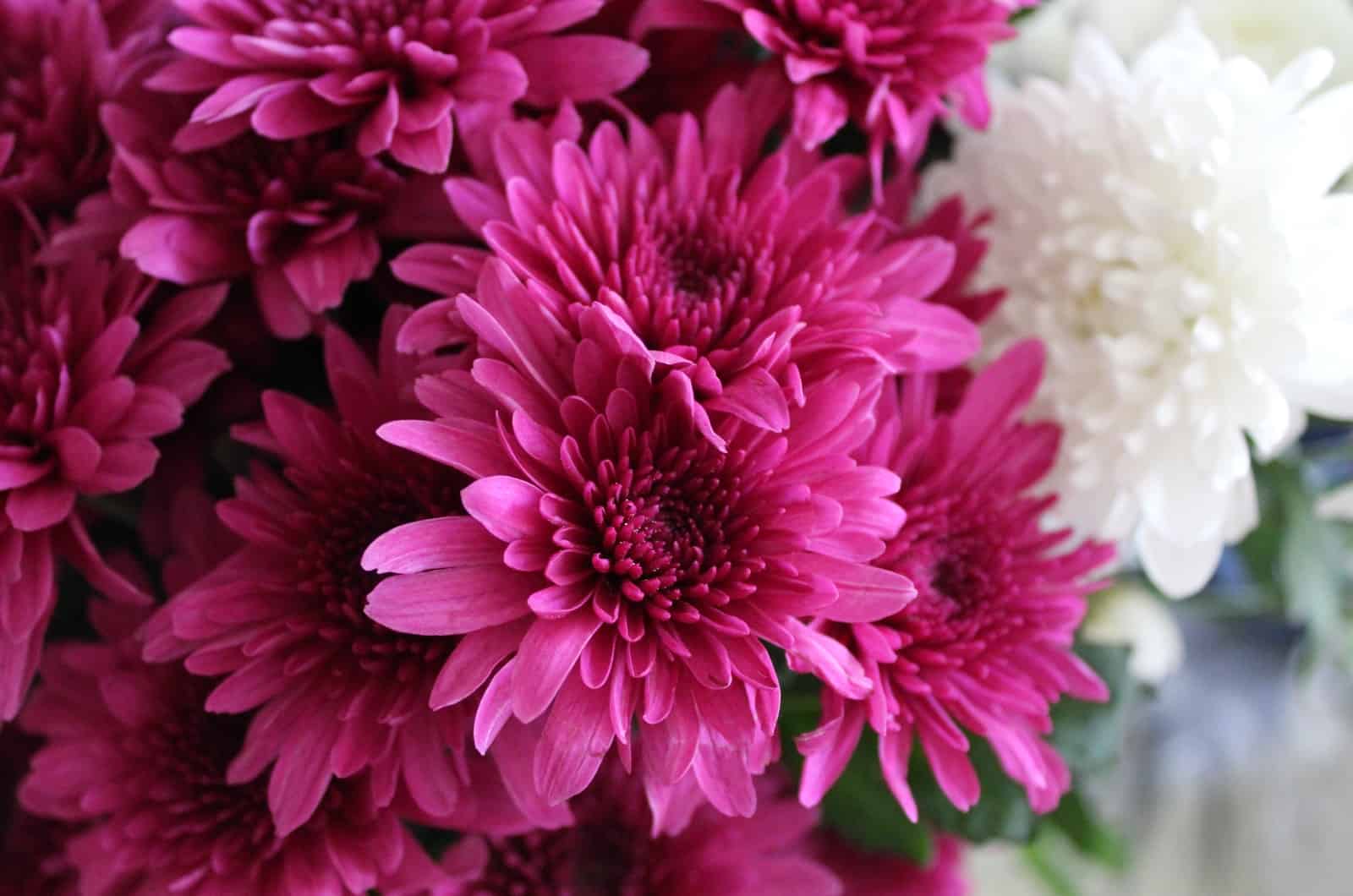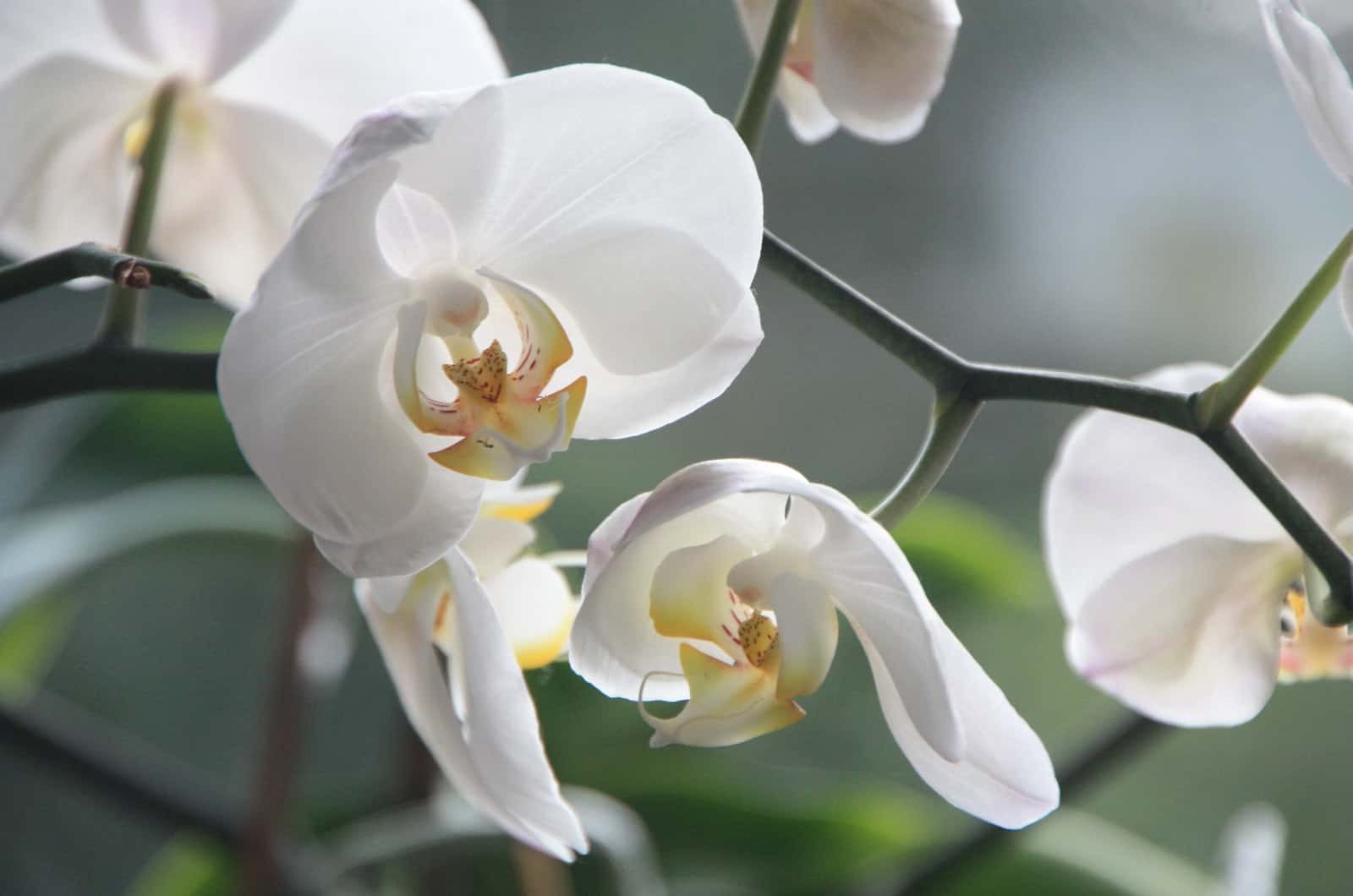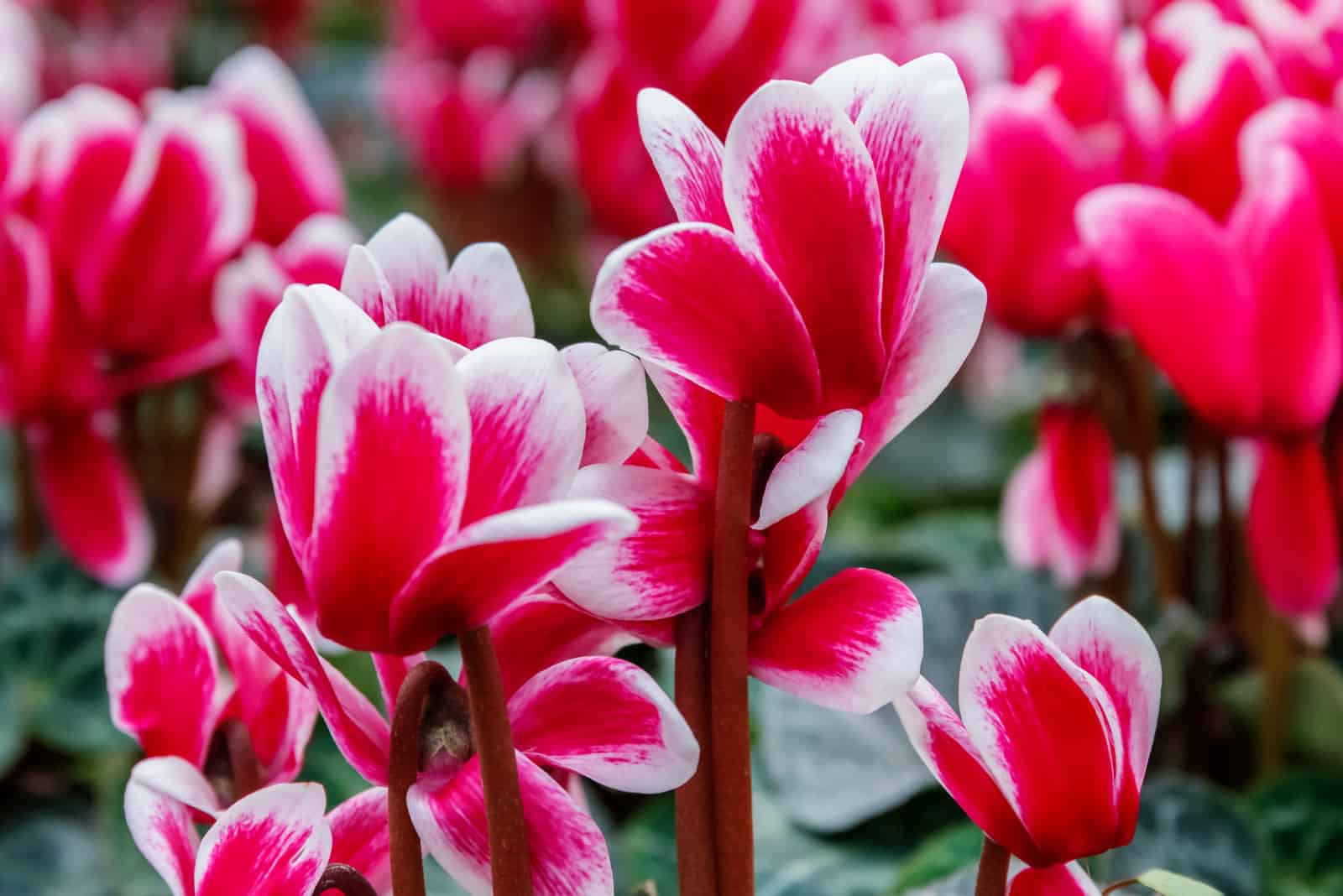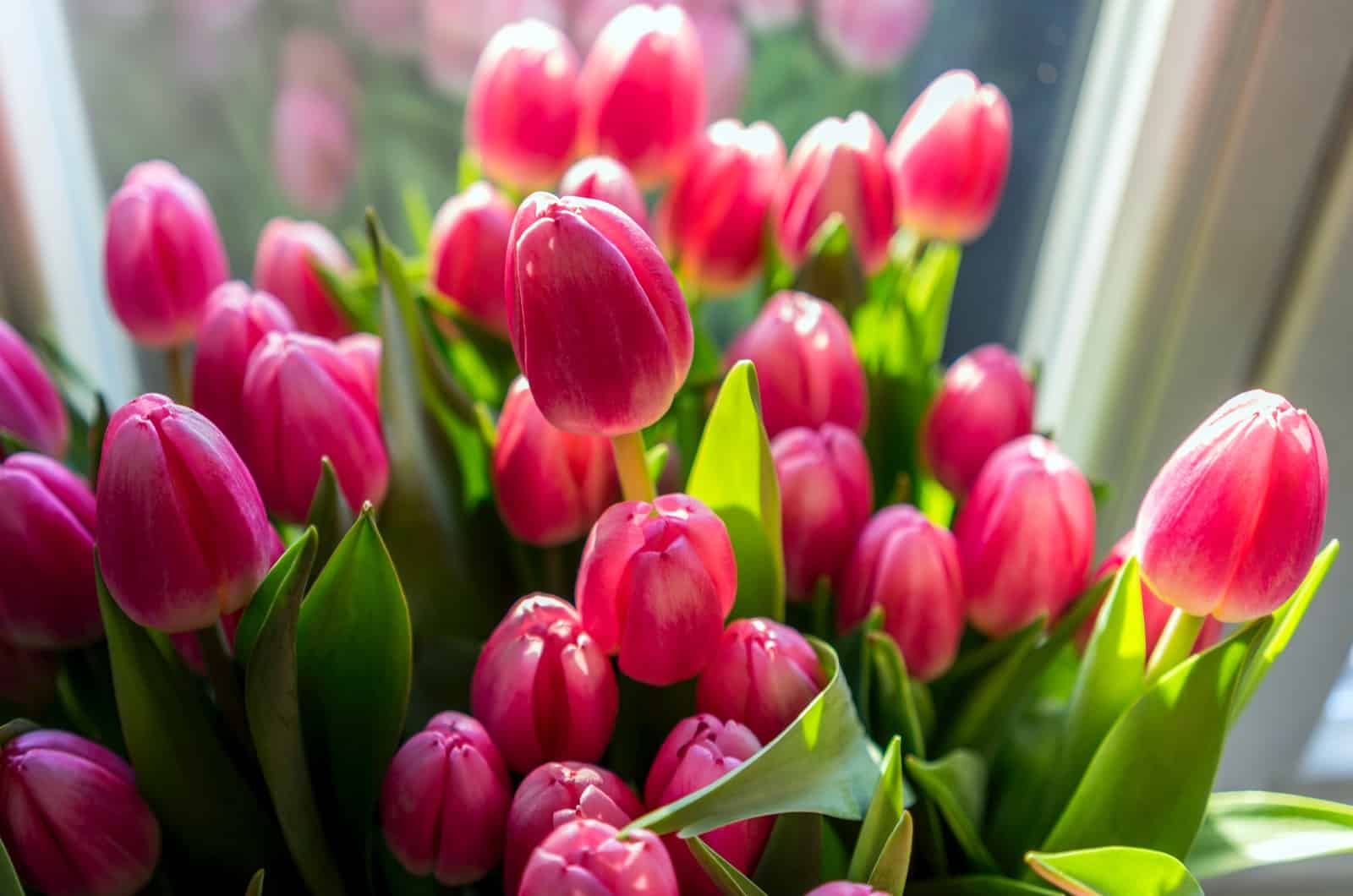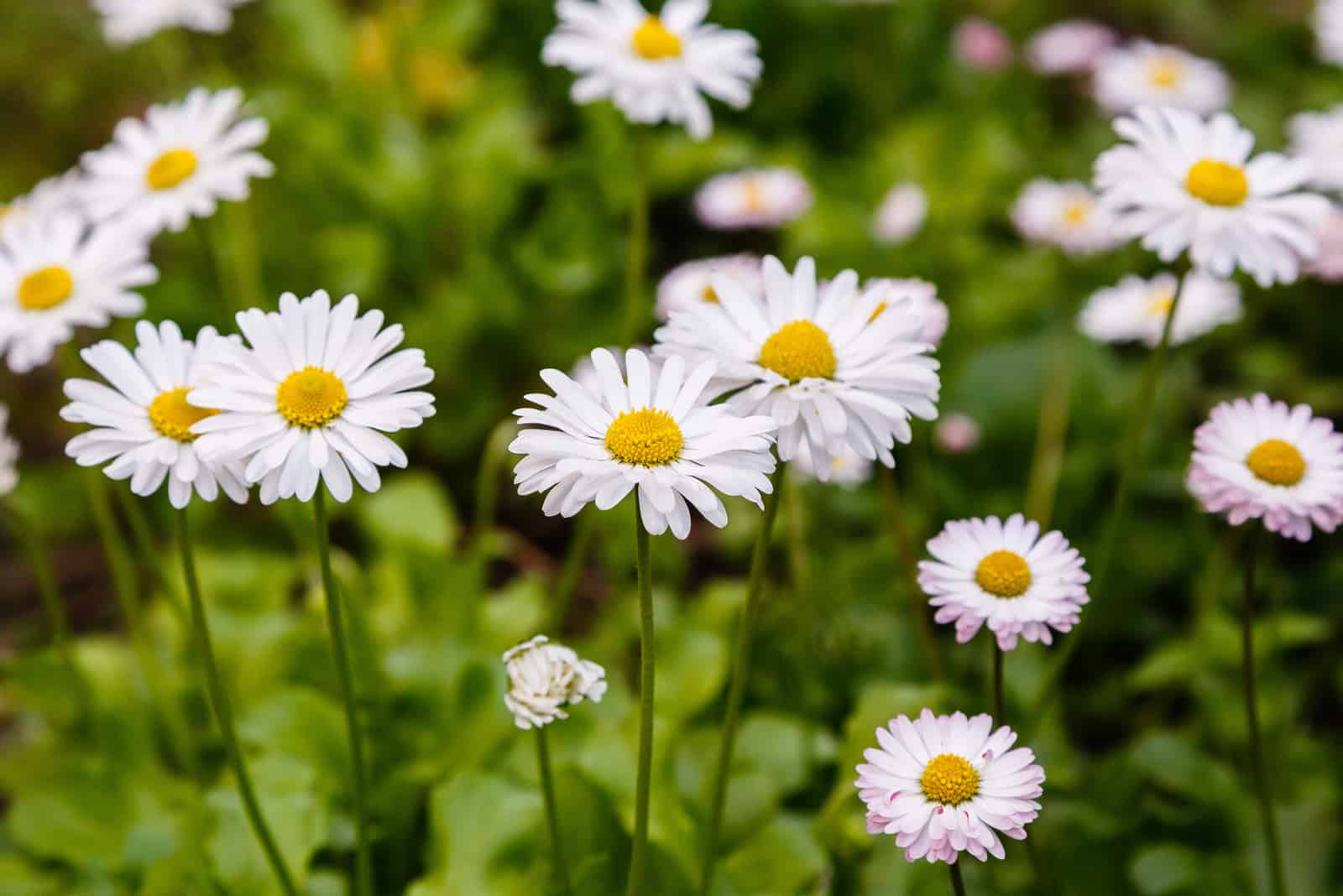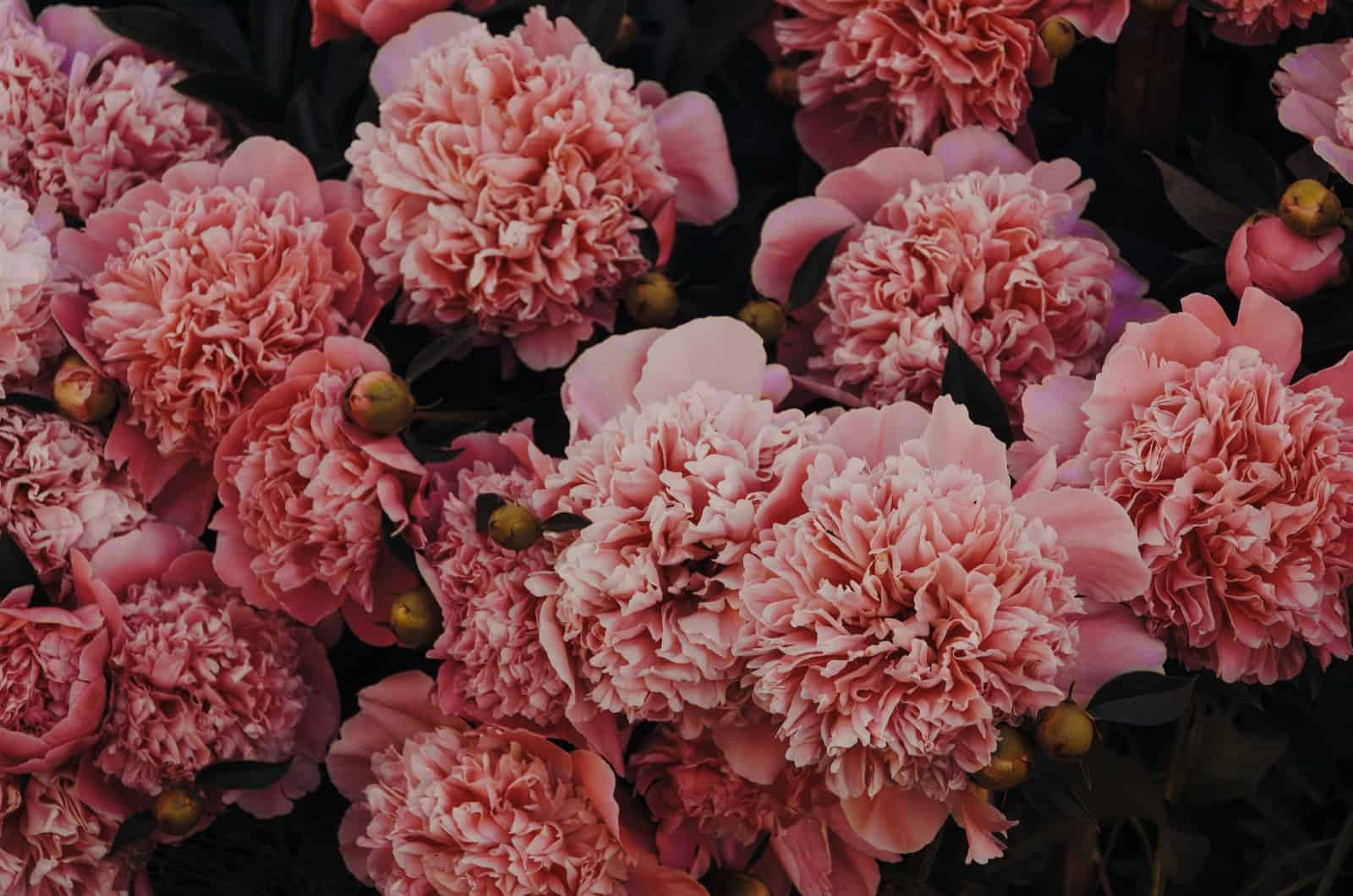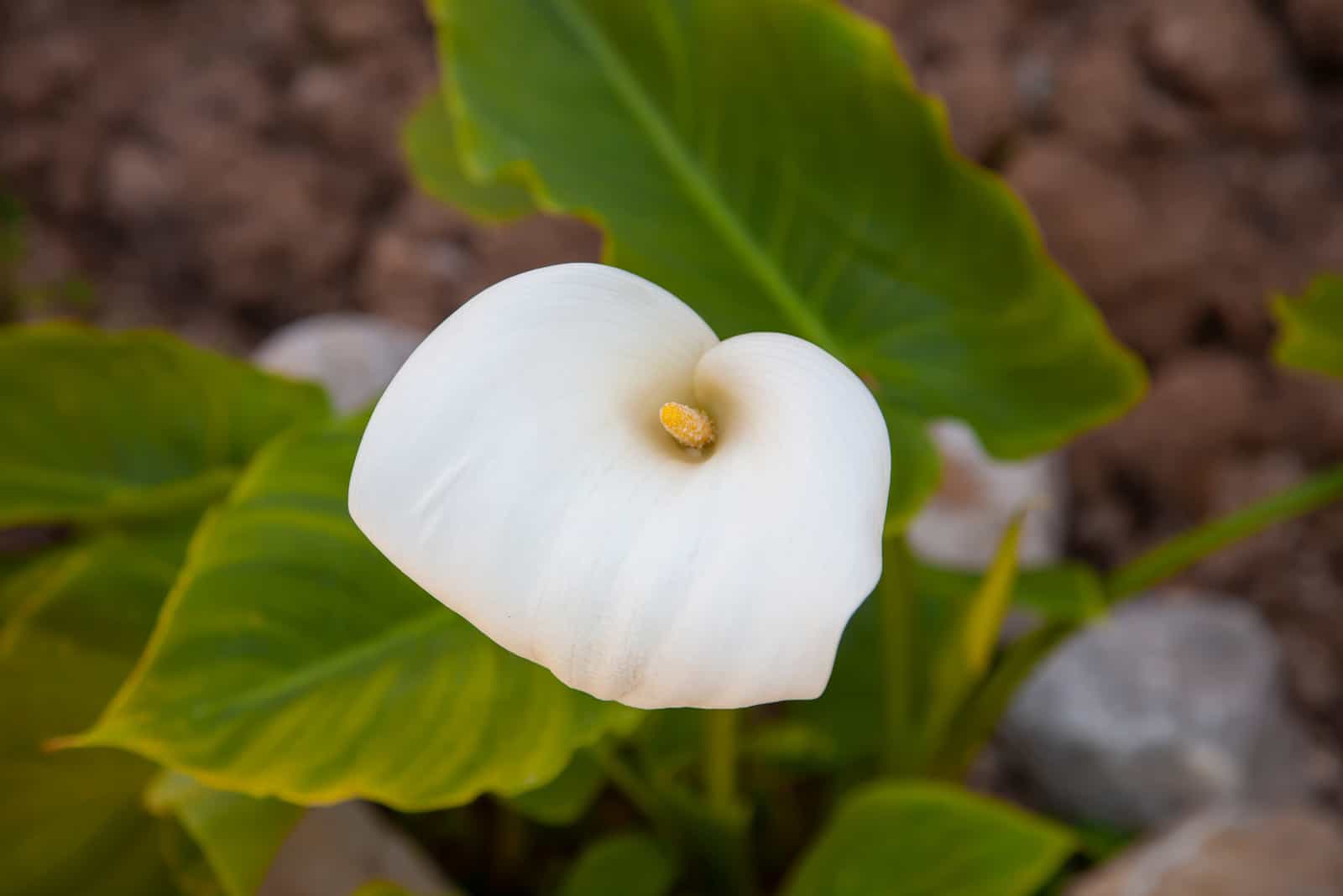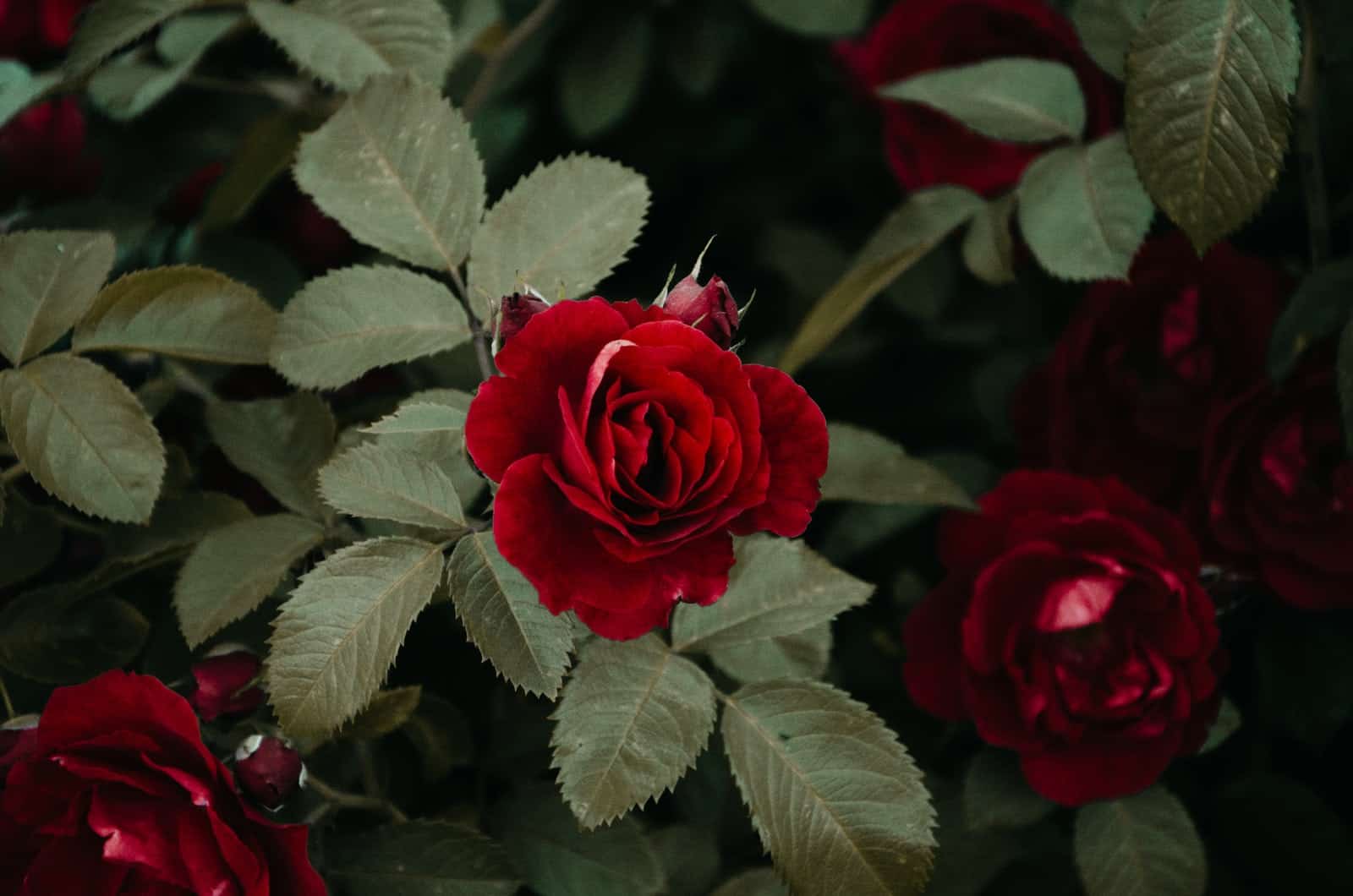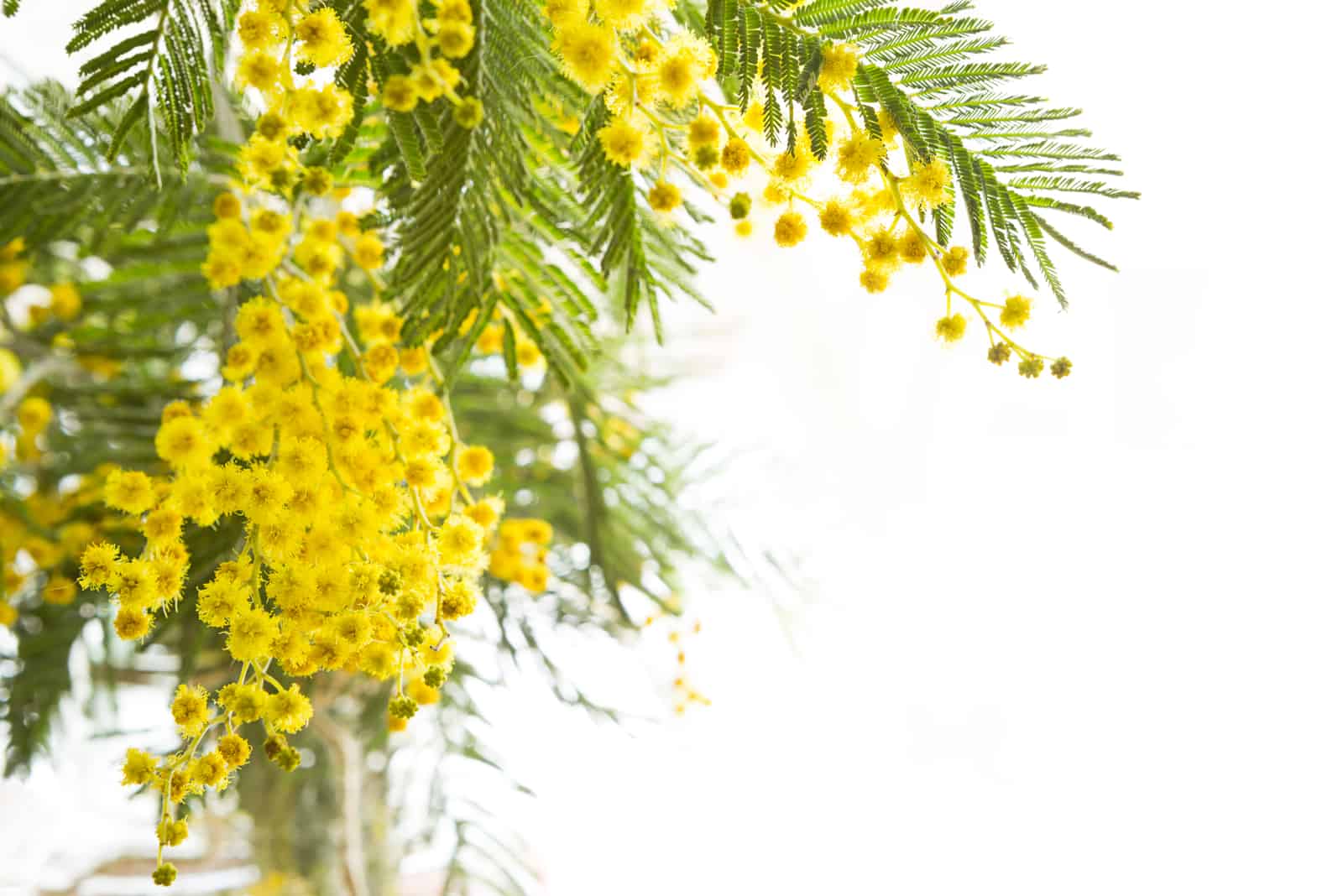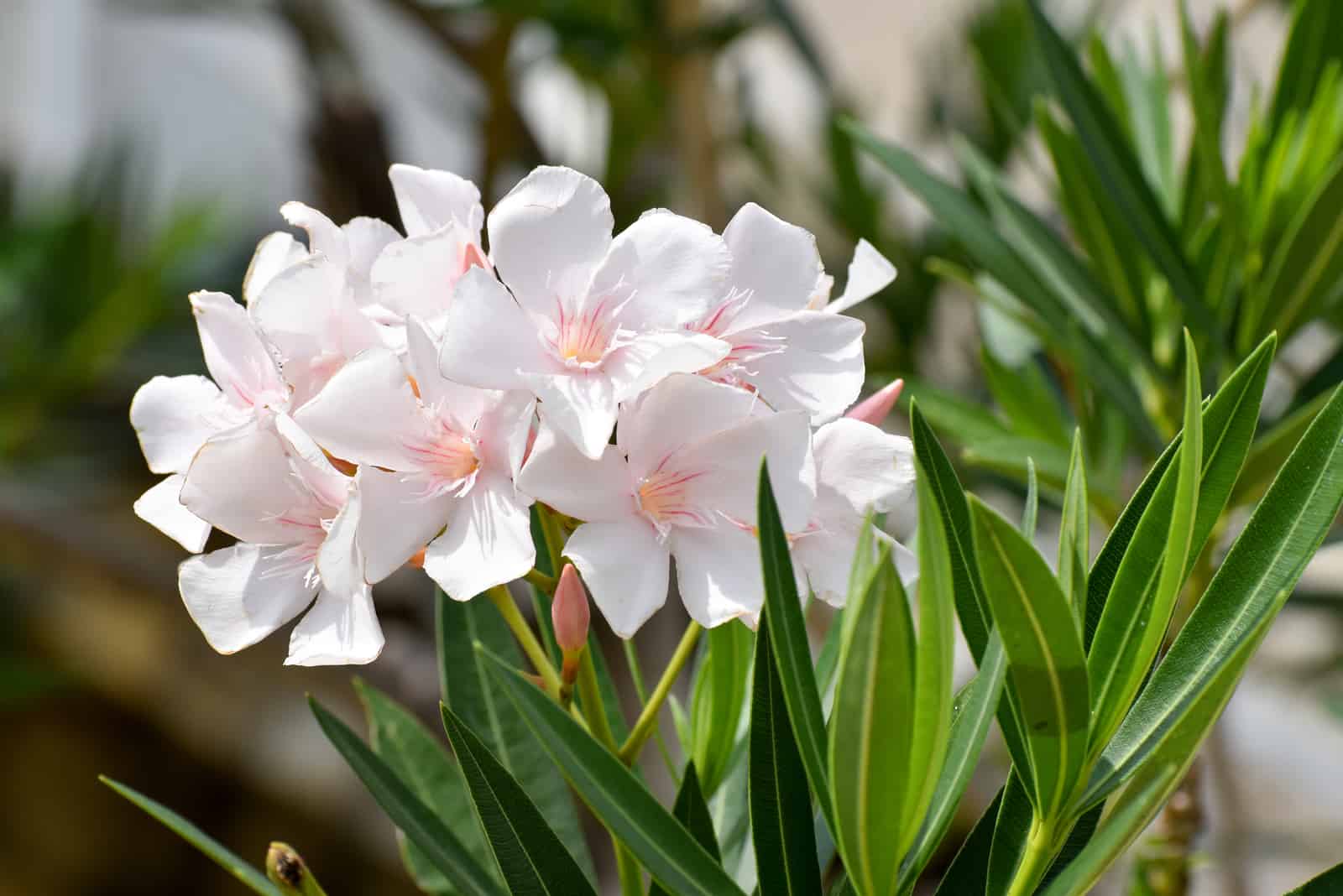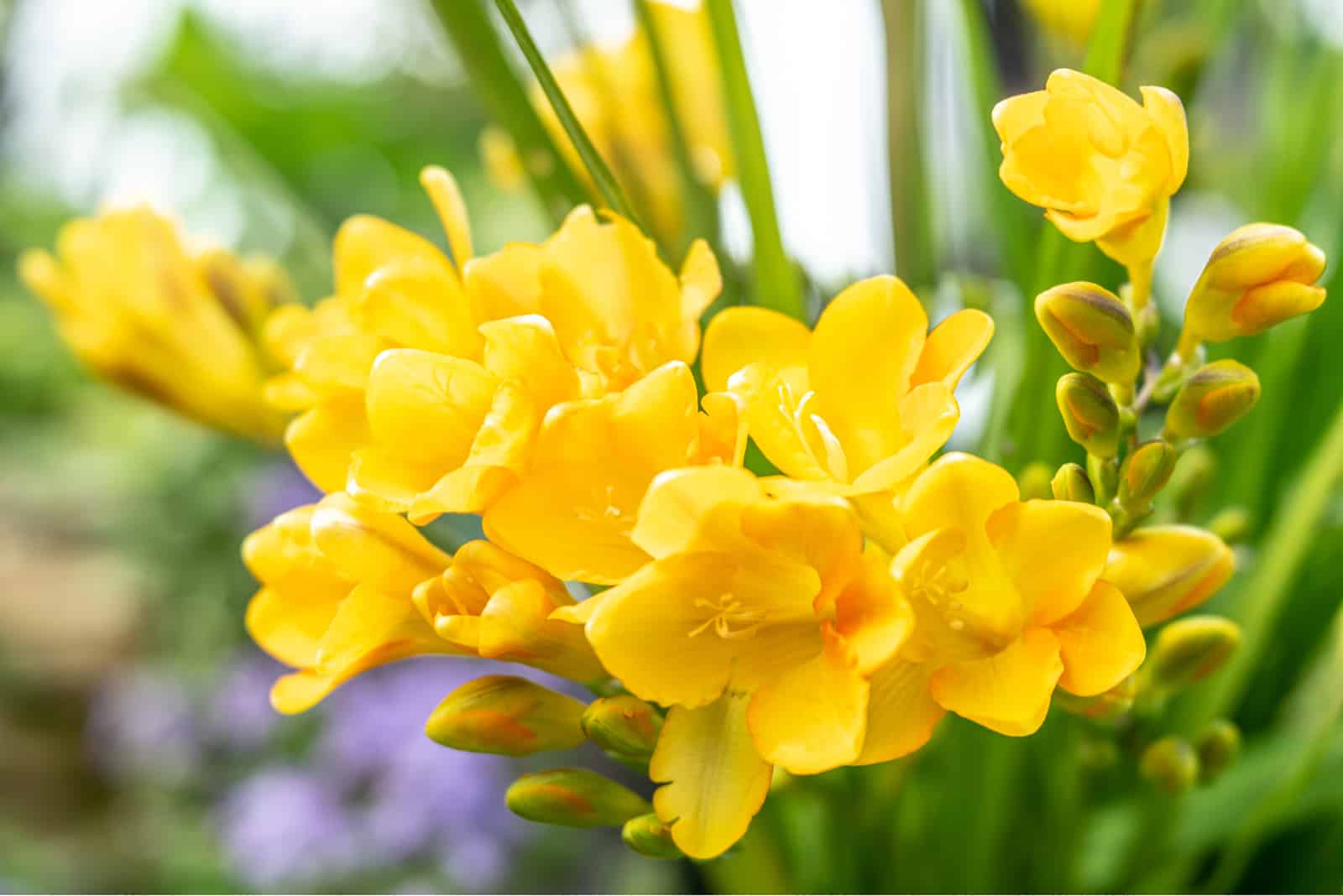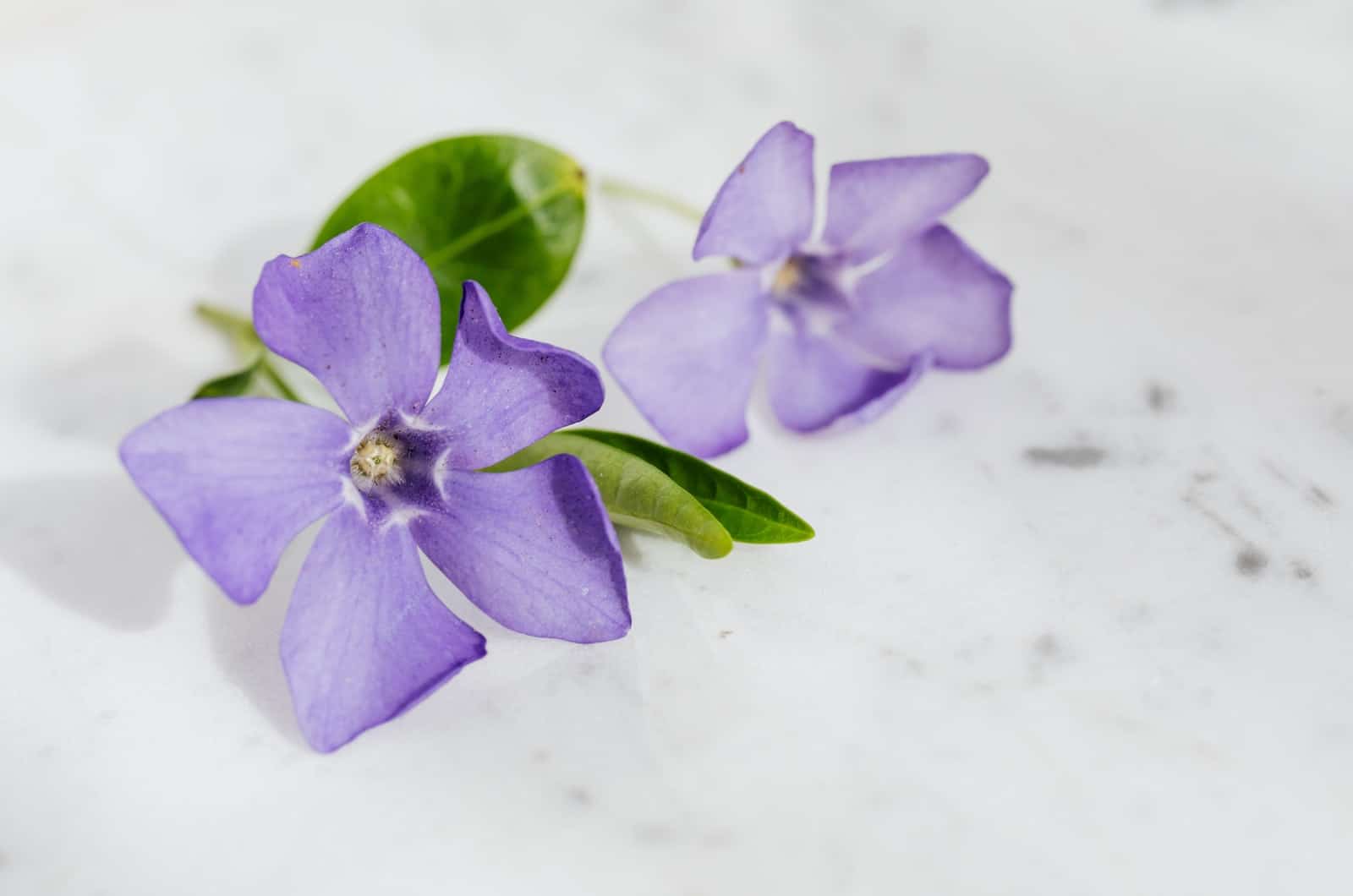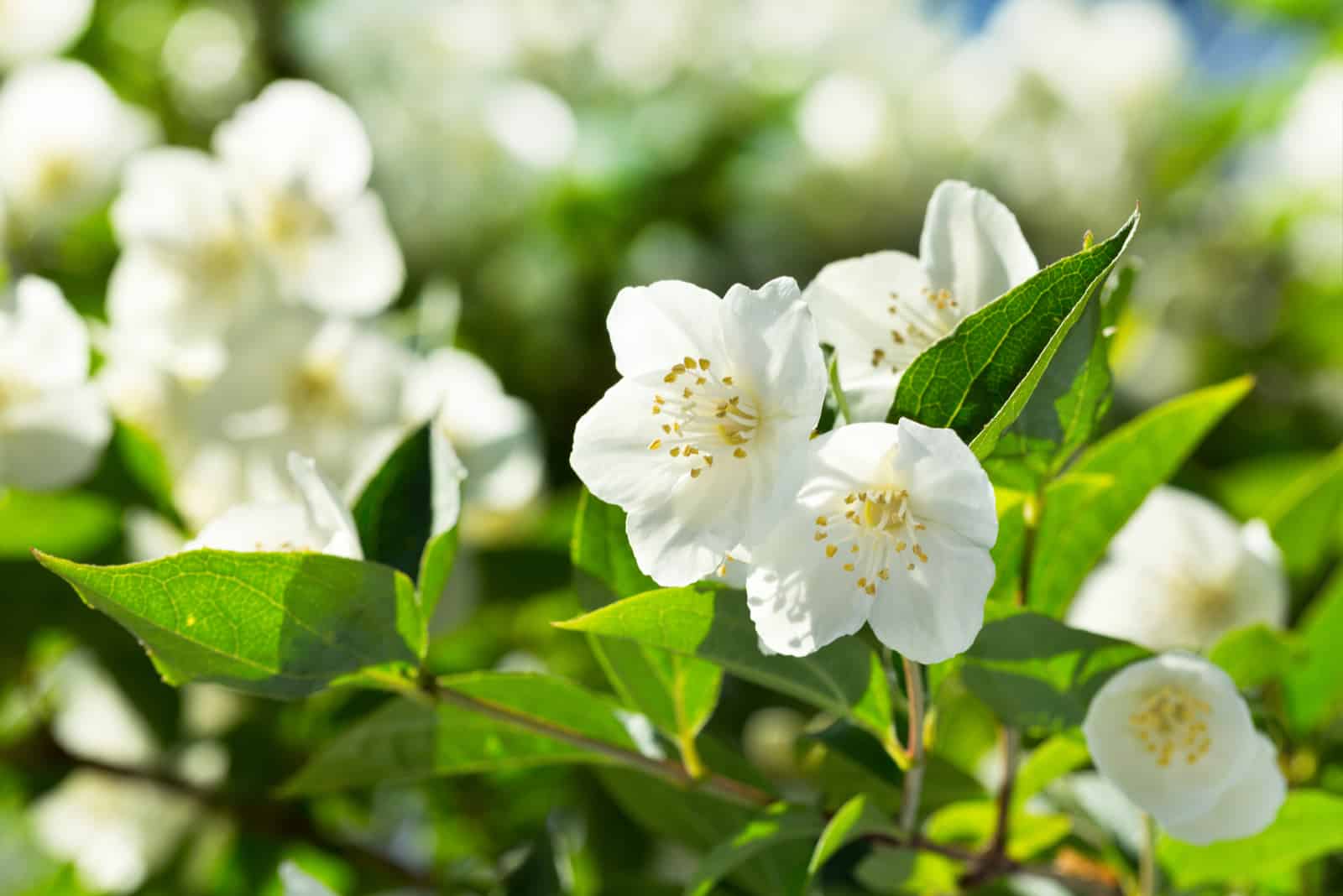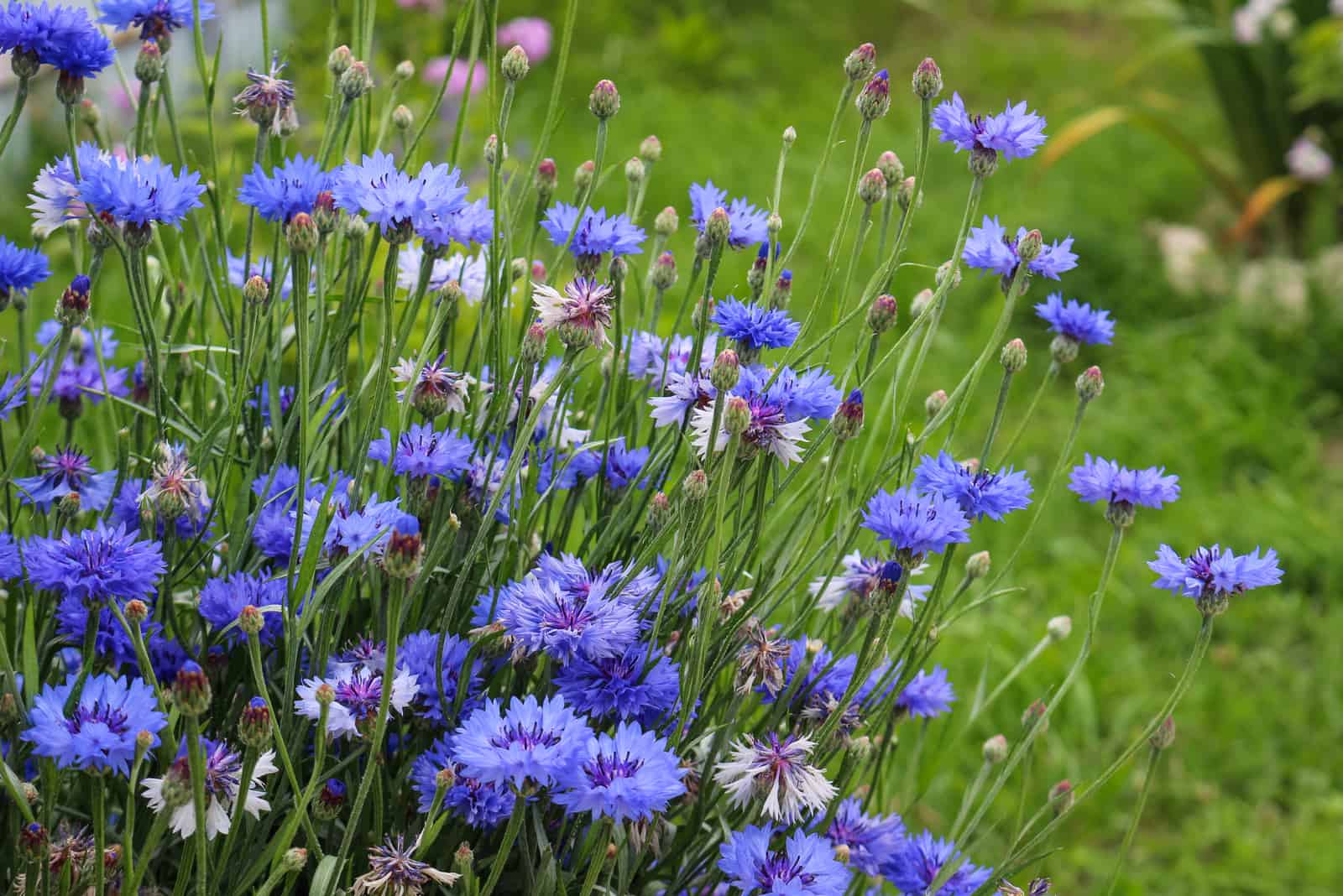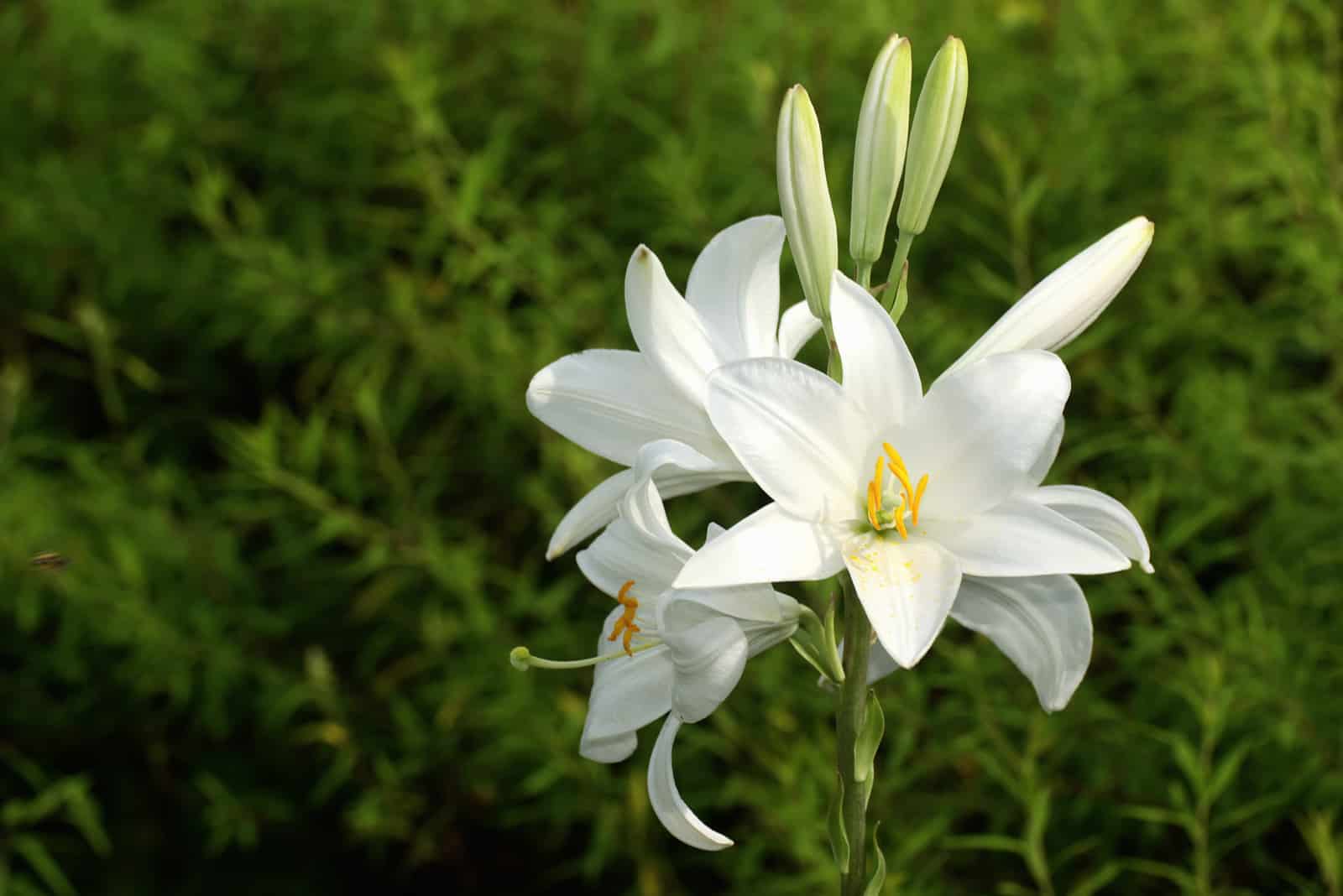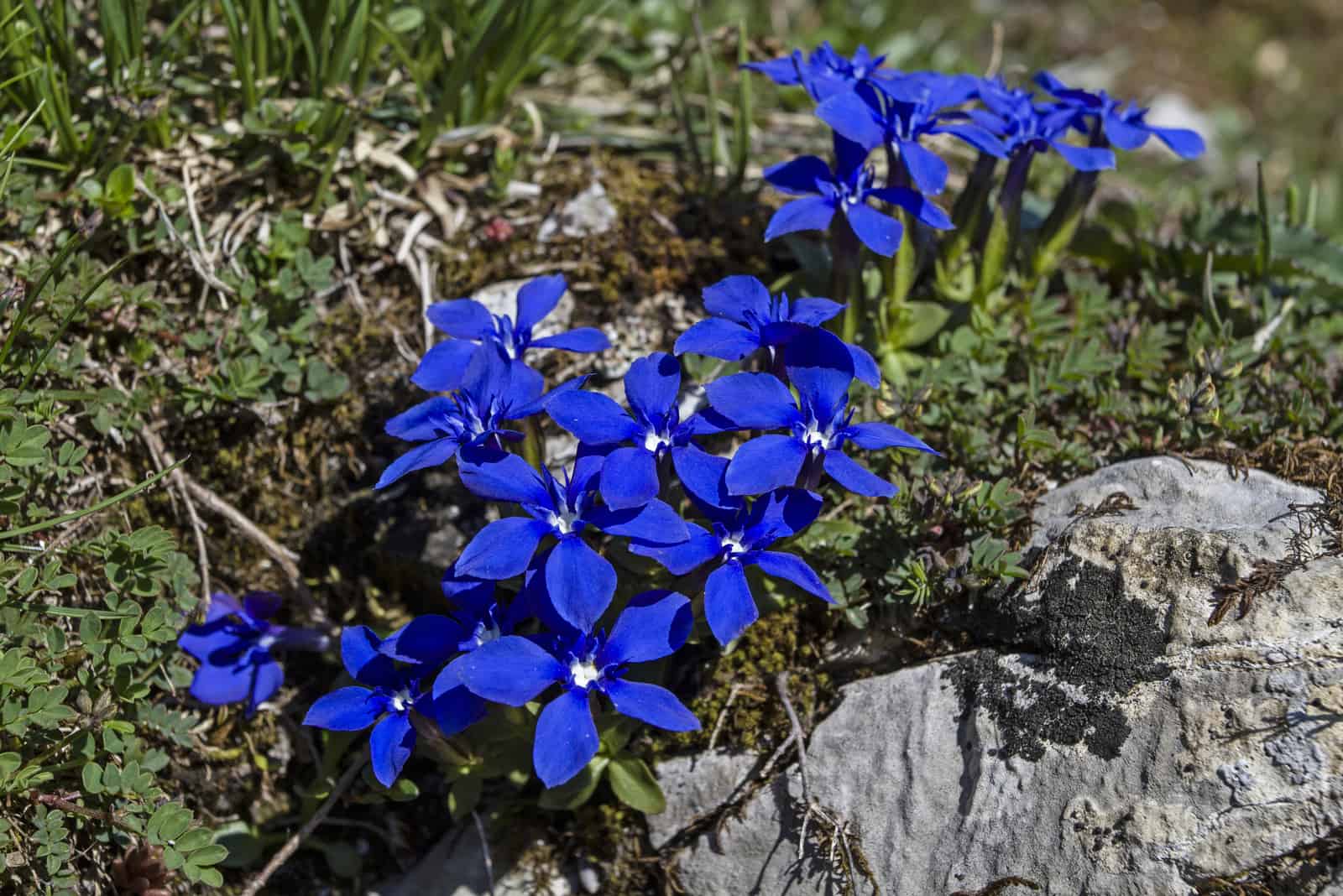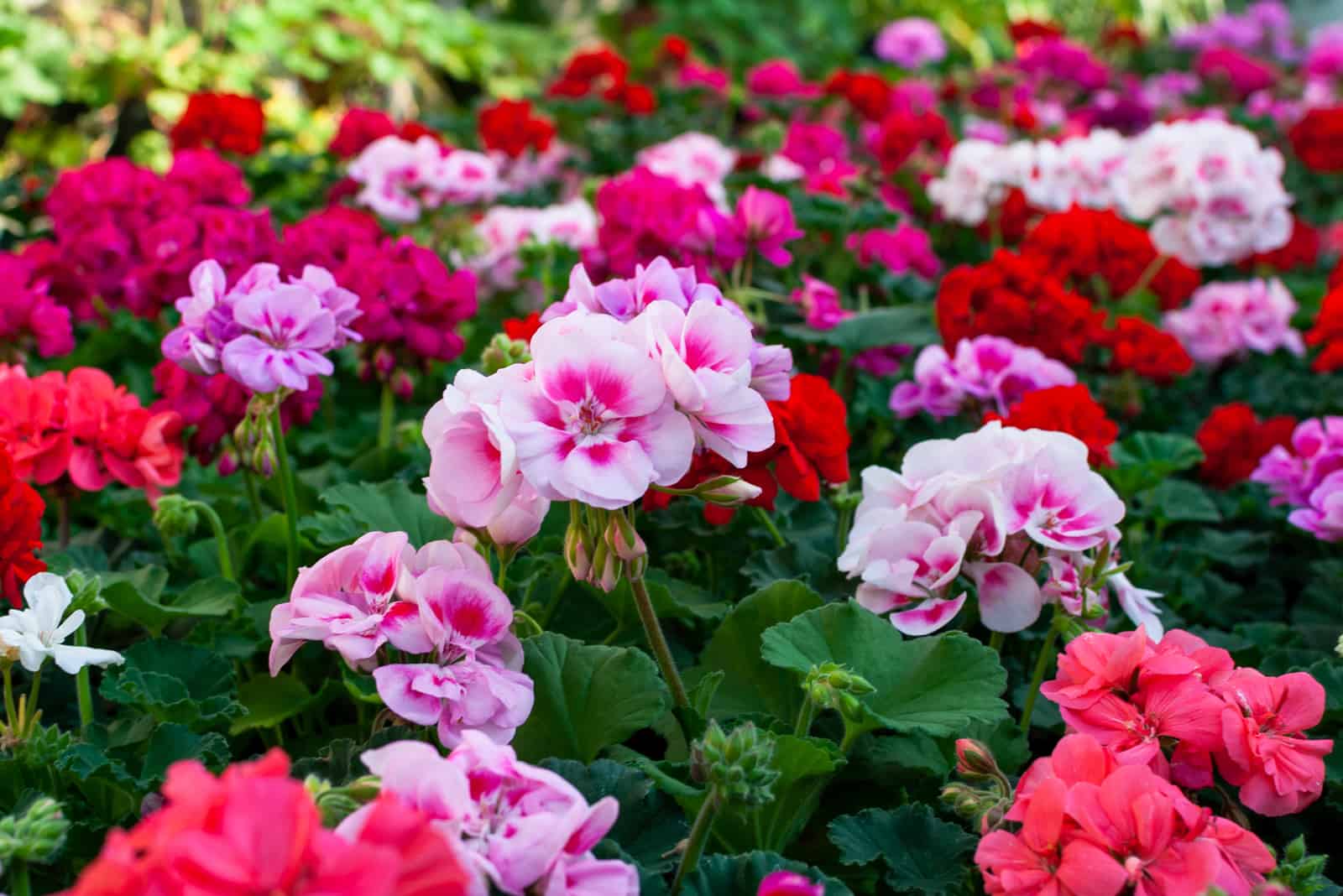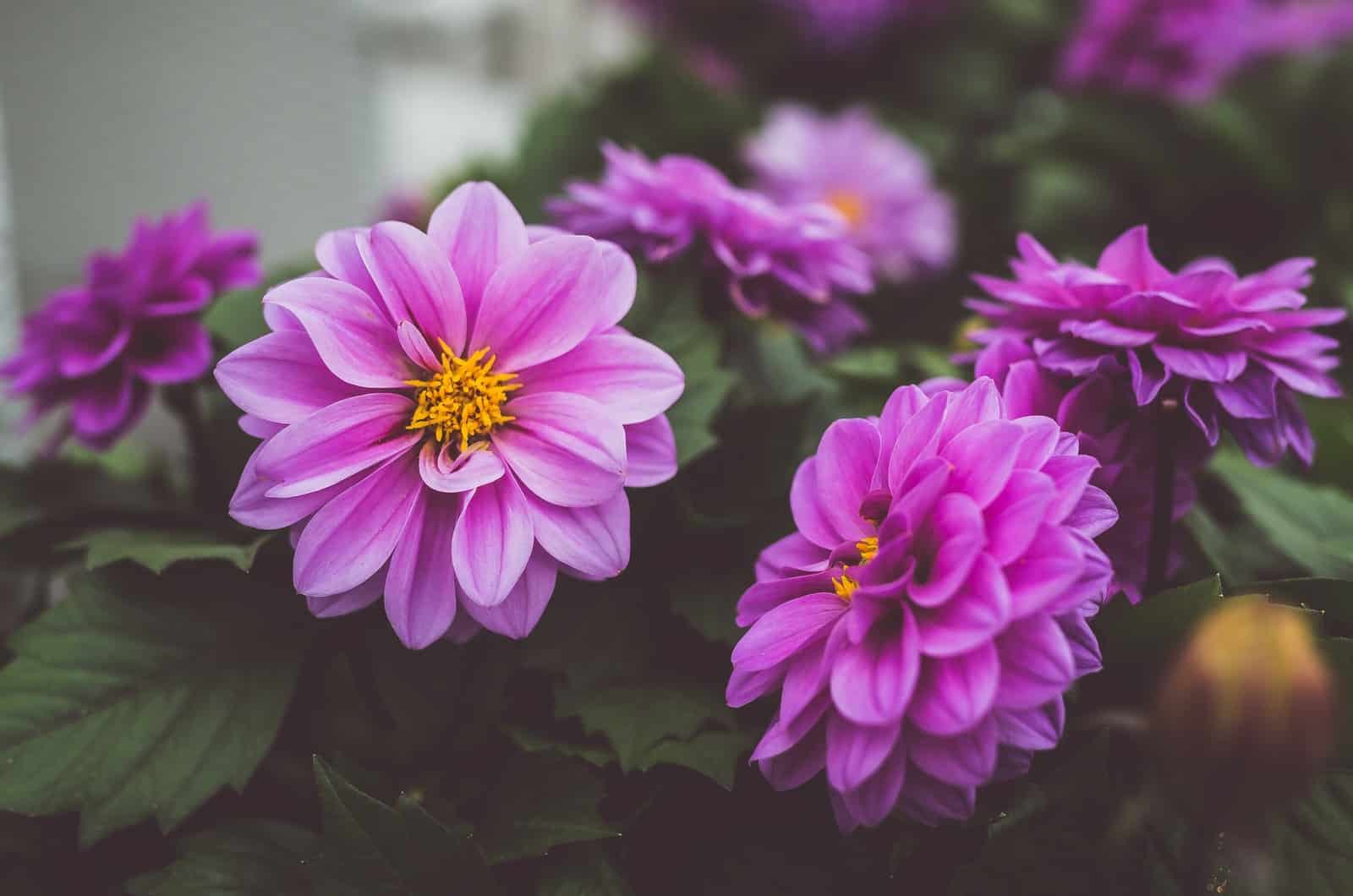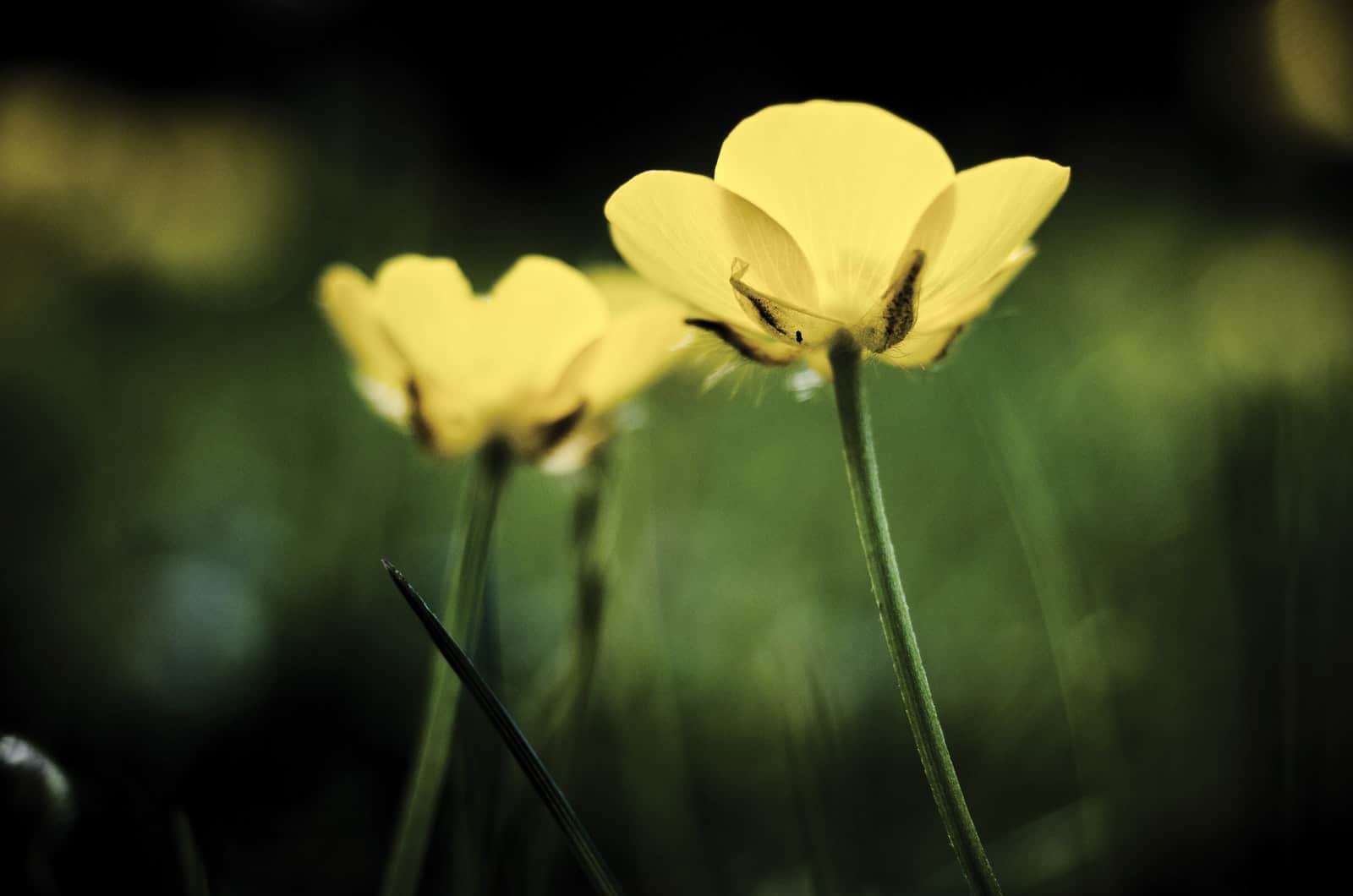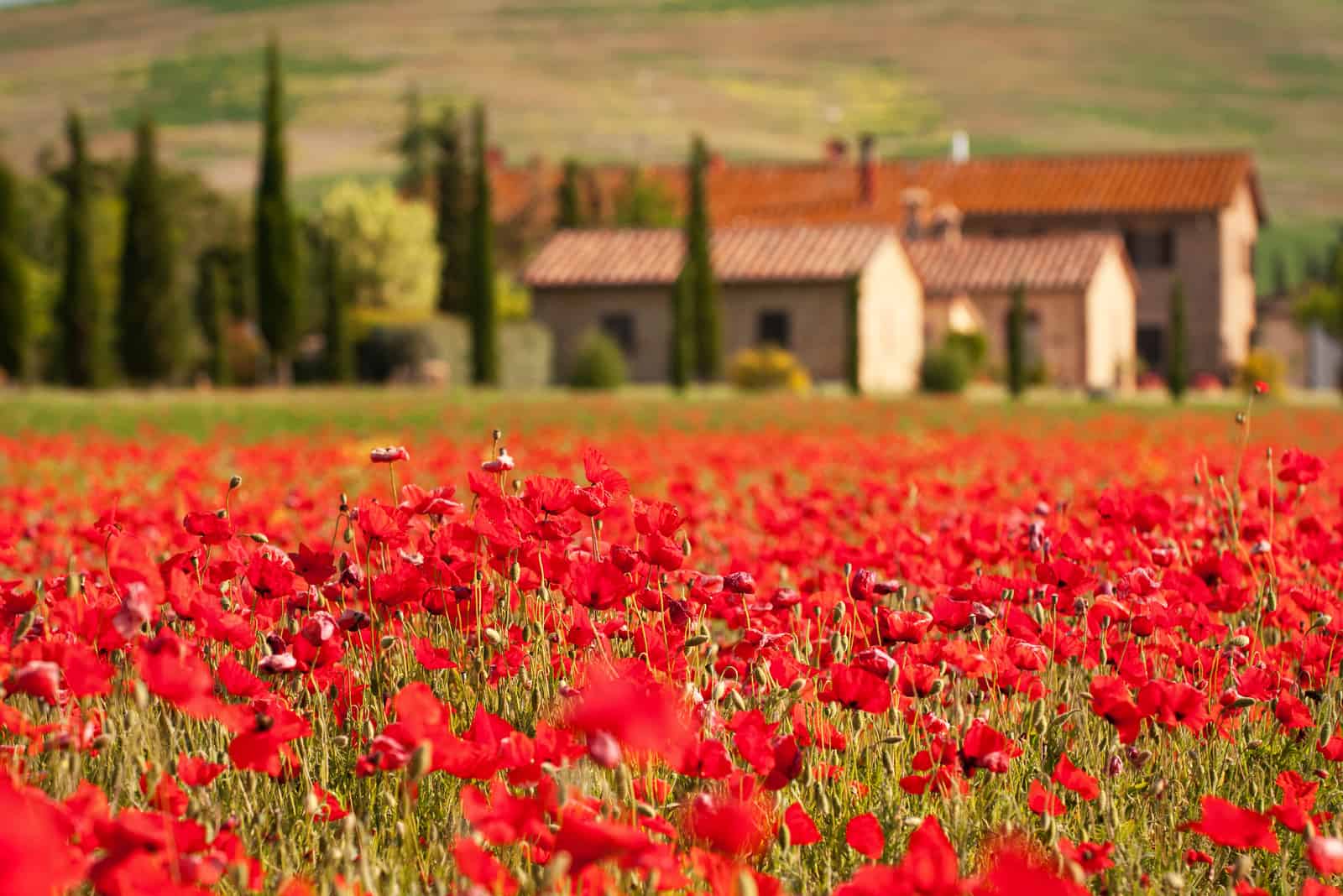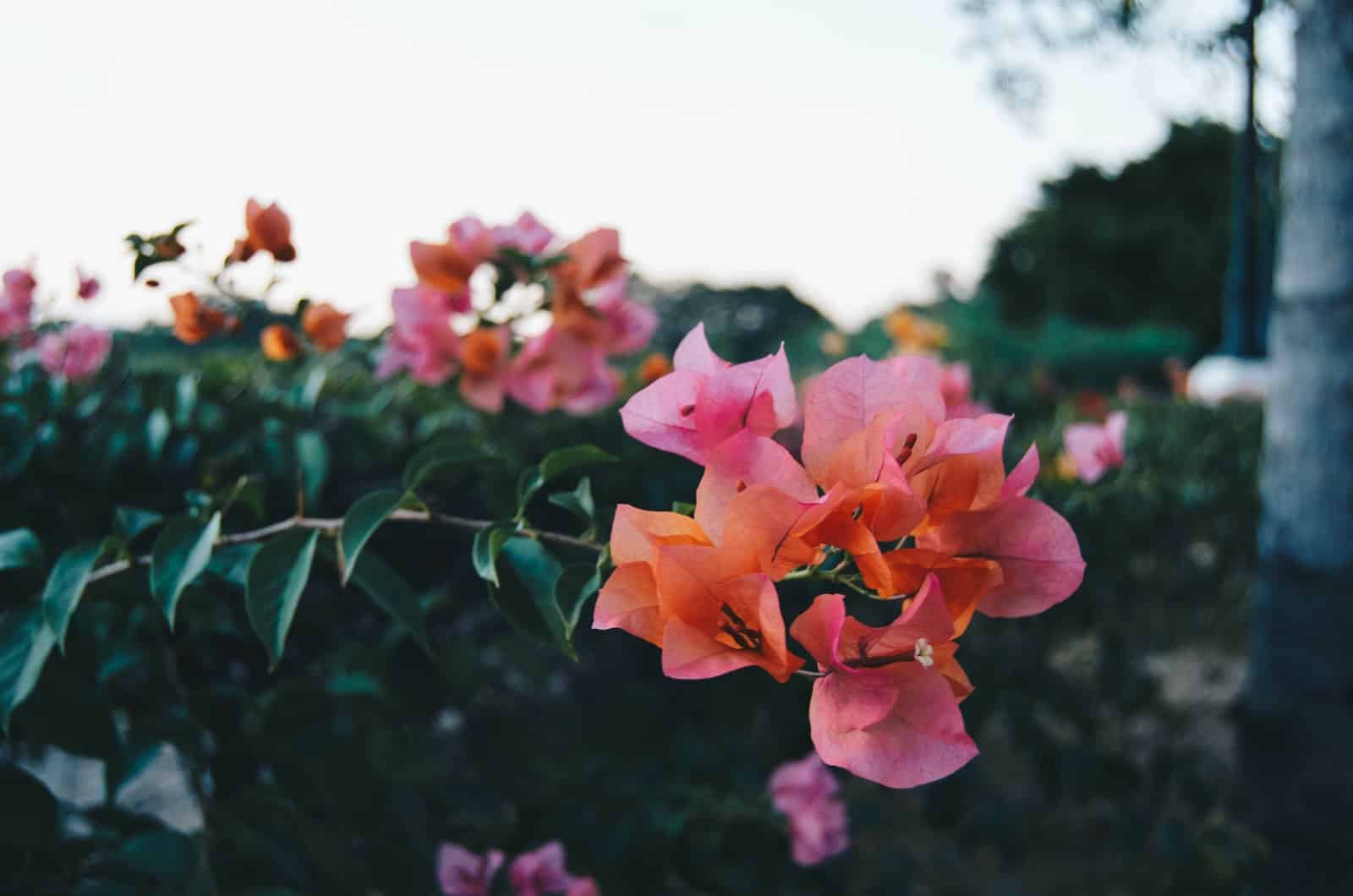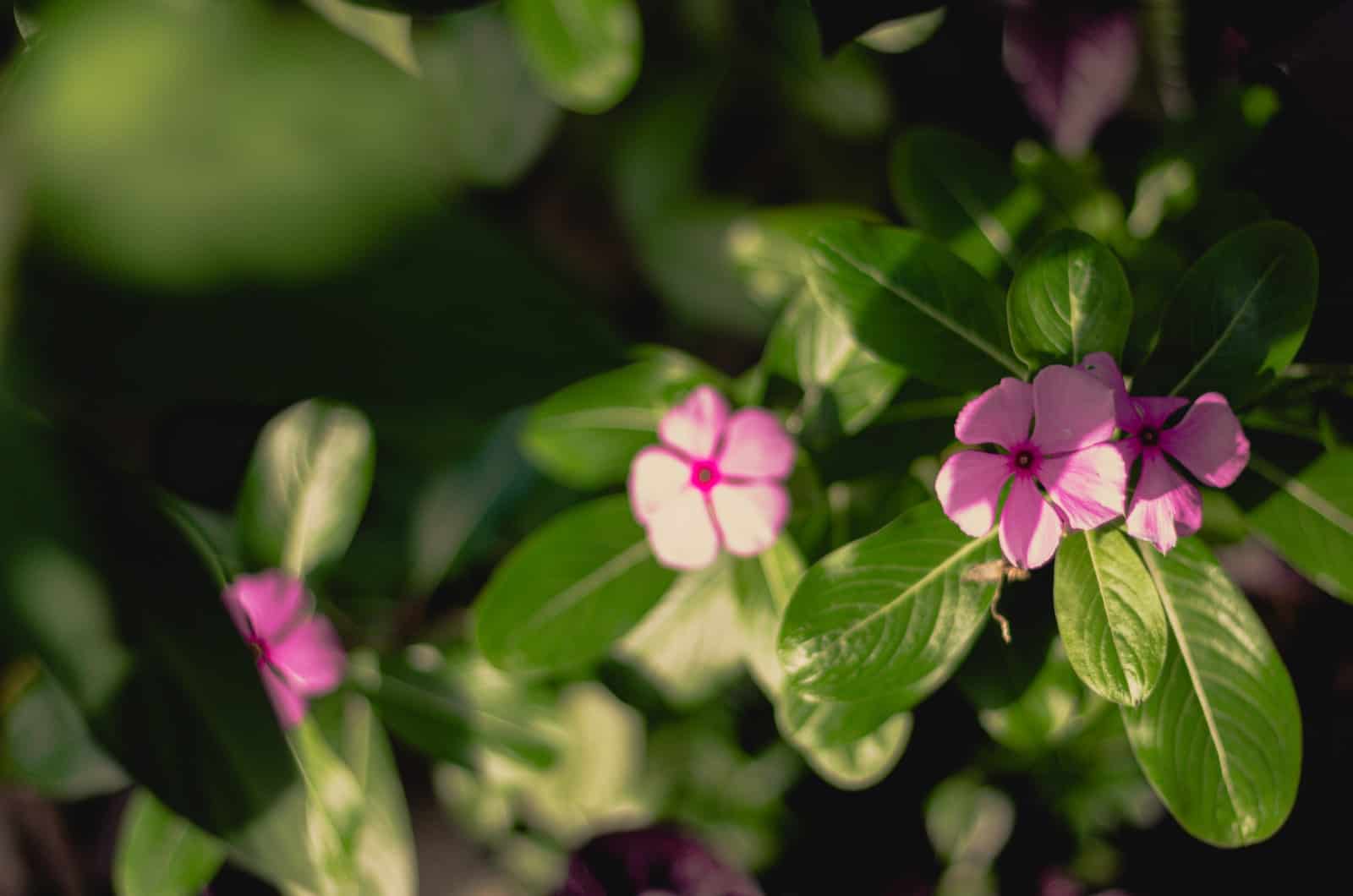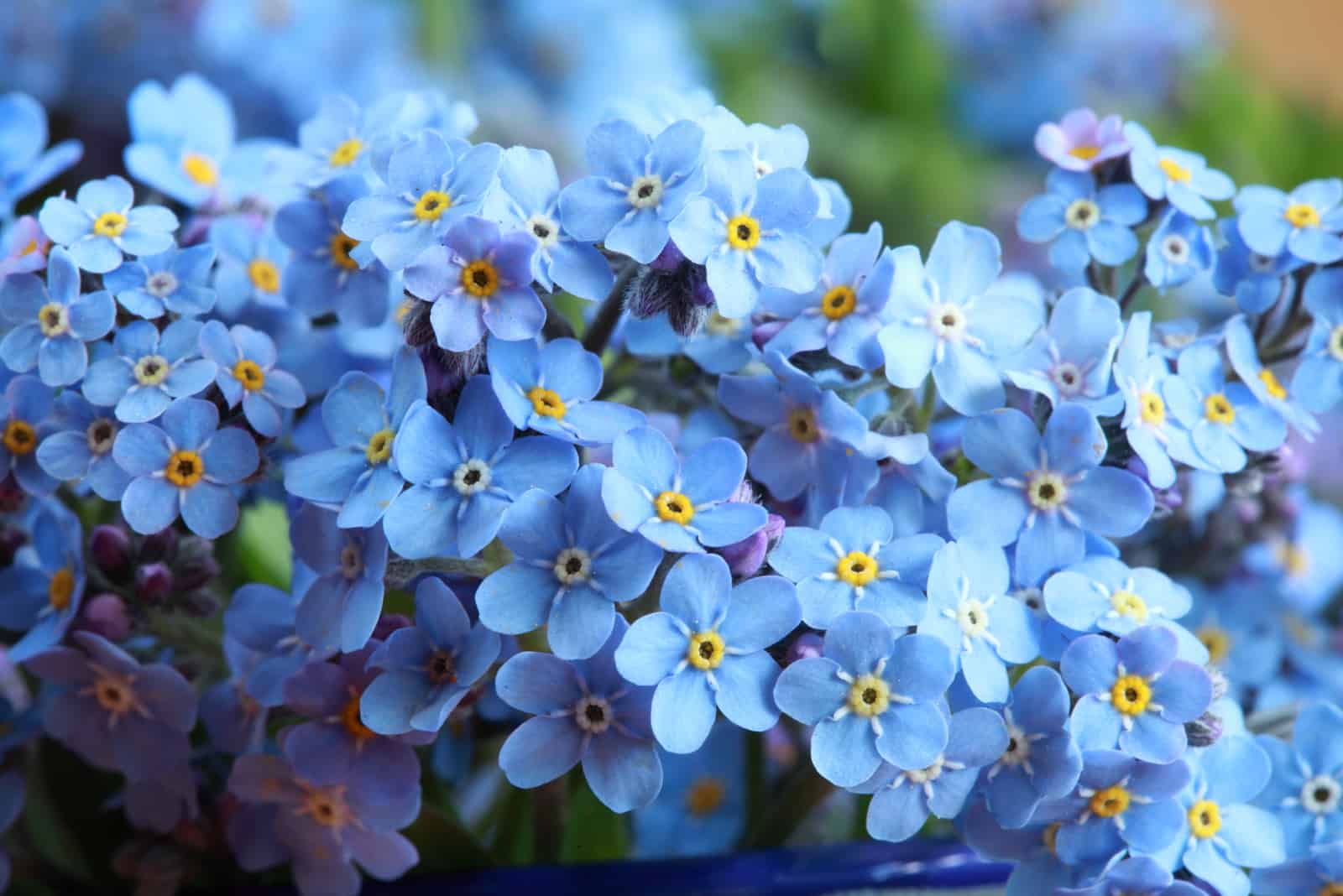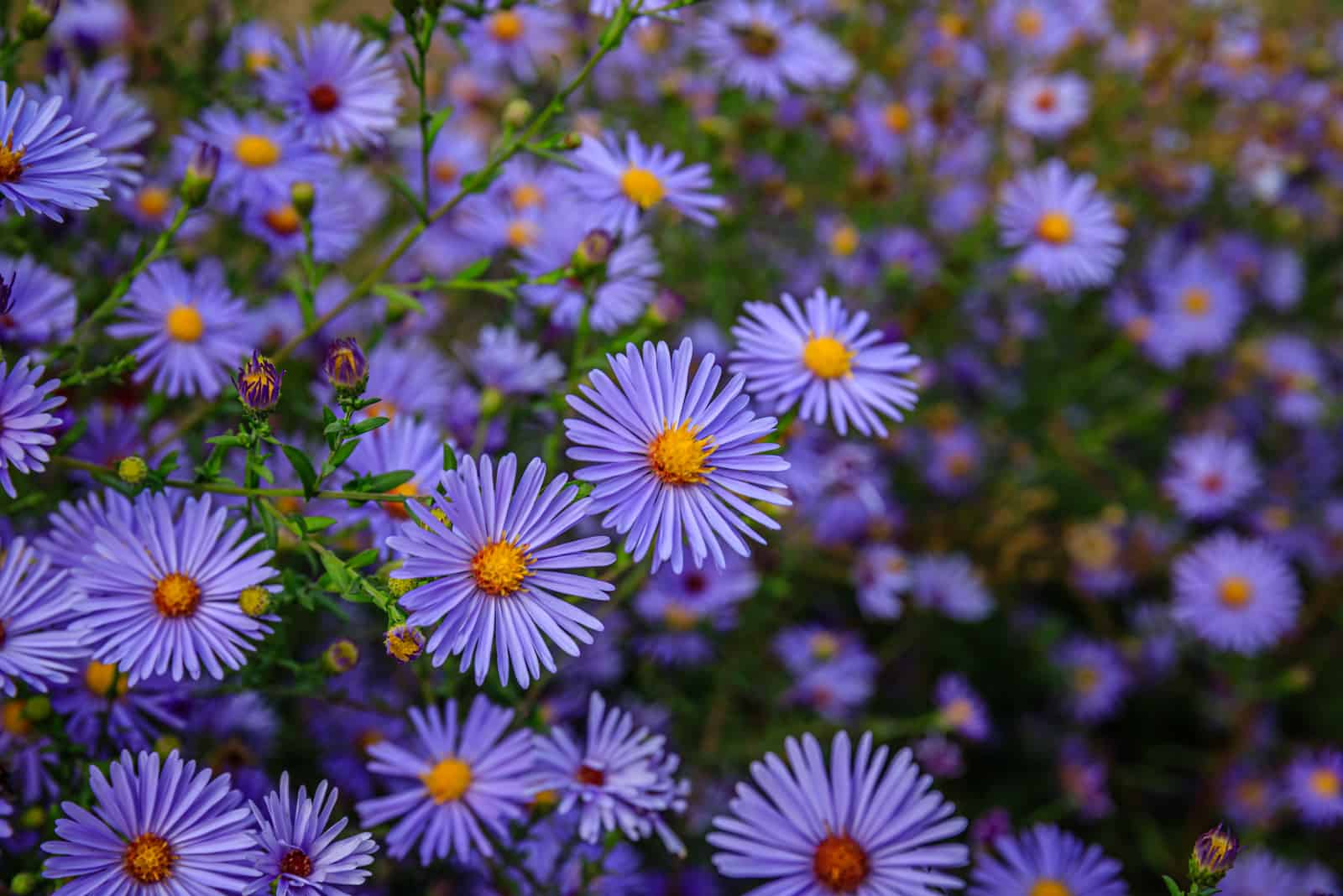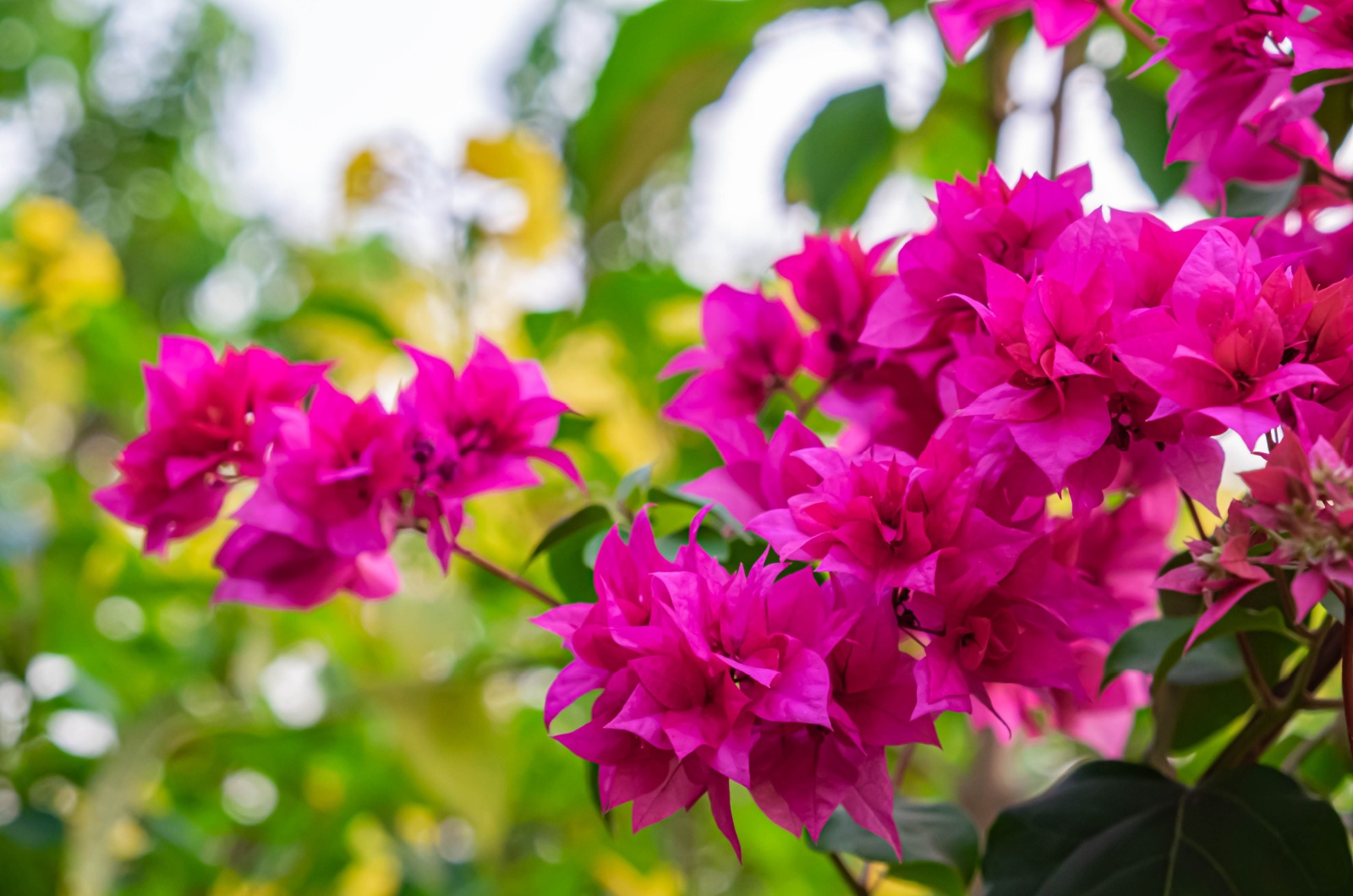Italy is known for many things; whenever someone mentioned Italy, I mainly thought of pizza in the past.
As a passionate gardener, now, the only thing that comes to mind when someone mentions Italy is spectacular Italian flowers. The Italian word for flowers is fiori.
This tradition-oriented country has a lot of flowers that symbolize something. Therefore, you’ll see certain flowers characterized as traditional Italian flowers.
For example, flowers are symbols of some occasions, such as weddings, funerals, etc. Different climates enable growers to grow many varieties of plants, which is why there are so many flowers typical for Italy.
When I visited Italy for the first time, I went to many locations and saw colorful flowers on each balcony, was gifted stunning bouquets, and saw the entire fields where different flowers grew.
I have made a collection of Italian flowers for you; I suggest you choose one to grow for yourself if you can’t visit this country.
Let’s start!
1. Chrysanthemum
Chrysanthemums come from the Asteraceae family and are known for their scientific name, chrysanthemum spp.
These flowers originate from Italy and symbolize longevity.
But, the meaning is also related to death, so you’ll find chrysanthemum flowers at funerals.
This is a herbaceous plant and has a bushy appearance. It’s a low-maintenance plant and can grow up to 11 inches.
You can see the chrysanthemum’s colorful flowers in winter, summer, and fall. They are spherical in texture.
These plants require well-drained, peat-moss-based, and fertilized soil.
They appreciate temperature ranges from 64 to 68°F.
If you want your chrysanthemum to thrive, ensure bright, indirect light.
2. Orchids
There are thousands of species of orchids and they can also be seen in parts of Southeast Asia.
Orchids symbolize love, luxury, and beauty.
Of course, Italian orchids differ in size and some other characteristics. Italian orchids can be a few inches tall or grow up to 9 ft.
Most orchid species are epiphytes with breathtaking evergreen leaves.
Orchids can develop flowers in two ways:
• From the pseudobulbs (not real flower buds but rather swellings in the stem).
• Directly along the main stem (only a few species).
I find it interesting that the primary colors of Orchid flowers are yellow, white, and pink.
Nowadays, you can find a wide range of shades because different colors can be injected into hybrids.
Suppose you decide to get yourself an orchid. In this case, I suggest you choose a Dendrobium, a delicate and elegant orchid species, a beautiful and quickly grown houseplant.
Orchids appreciate high humidity, a temperature of about 75°F, stony and well-fertilized soil.
These plants must be watered thoroughly during summer as they are not drought-tolerant.
Just to remind you that these plants require watering of the soil, stem, and leaves.
3. Cyclamen
These flowers come from the Primulaceae or Myrsinaceae family (depending on the classification).
Cyclamens are symbols of love, adoration, and devotion.
The most common cyclamen varieties are Cyclamen purpurascens and Cyclamen persicum.
You can see them bloom in fall and winter, when the leaves and stems develop from their tuberous roots.
Cyclamen flowers come in different colors: yellow, purple, pink, and white.
They have heart-shaped leaves, and generally, these plants can be found in Italian alpine shady woods.
They love cooler and humid places and despise too much sun exposure.
How To Grow Cyclamen
Cyclamen is a hard-to-grow plant, but it can bloom for five years if you pay a lot of attention to its care.
During the growing season (fall), you should put the plant indoors and ensure that the temperature is not higher than 64 degrees fahrenheit.
If you grow the plant indoors, keep it away from heating sources, like fireplaces and radiators.
You can place it outdoors during winter, unless the winter is too harsh as it can freeze the plant.
An interesting fact is that cyclamens go through dormancy during the spring and summer months. During dormancy, remove all dead or dry leaves.
If you decide to sow these plants, do it between July and September.
4. Tulips
These fantastic flowers belong to the Liliaceae family. Tulips are mostly grown because of their sweet and intense scent.
They symbolize perfect love, which makes them the top flowers to gift your loved one. Check out these 70 amazing tulip quotes to inspire you and make your day.
The tulip leaves are dark green, but the flowers come in different colors.
These flowers can be propagated through bulbils or sowing. When propagated by bulbils, after extracting the cloves, they should be kept in a dry and cool place until planting.
On the other hand, after the seeds are taken out of flowers, they must be buried in rich soil.
You could wait for six years until germination occurs.
Fertilization is an essential part of tulip care. If you decide to grow a tulip, you should fertilize it regularly after it blooms.
5. Sunflowers
I have to admit that the sunflower is one of my favorite flowers. This Italian flower can grow anywhere and tolerate different conditions.
It’s known as the flower of Tuscany.
Its watering schedule is simple; from time to time.
It requires any level of acidity, and it’s drought-resistant.
Sounds incredible, right? But that’s not all; it even produces many seeds. This means that there are enough seeds for birds, pollinators, and humans.
The plant has a 3 inch thick stem and can grow up to 6 feet.
What is fascinating about sunflowers is that they have heart-shaped leaves and long yellow flowers; when the plant matures, it bends over due to the weight of the flowers and offers seeds in the form of pipes.
They will survive hot and long summers and bloom at the end of summer or early fall.
Sunflowers have flowers filled with seeds and stunning petals during their growing season.
6. Margherita Daisy
The Margherita daisy belongs to the Asteraceae family and can be seen in different locations in Italy; many spaces in some cities are covered with these flowers.
These were the favorite flowers of Margherita of Savoy-Queen, which is why they are considered national Italian flowers and lilies.
These flowers symbolize prosperity and wealth.
You can grow one in your garden’s flower bed. It’s a great choice if you search for disease-resistant flowers.
Margherita daisies come in different sizes and colors, like yellow, purple, orange, and white. Basically, you can find these flowers in any color (or height) you wish.
These delicate Italian flowers can’t be mistaken for any other. They have a stem with only one flower, beautiful petals, and green, thin leaves.
Although they grow well in cooler places, daisies aren’t resistant to frost.
The best option is to protect them during harsh winters. You can cut the bush very close to the ground and cover it with earth and sand.
You can expect blooms during the fall and spring months.
Daisies don’t need much water, except on hot days. They require fertilizer rich in potassium and need more significant exposure to the full sun when blooming.
7. Carnation
Carnations belong to the Dianthus genus and have about three hundred different species.
Carnations symbolize protection, healing, and fascination.
Each species has in common fragrant spectacular flowers and grayish-green leaves.
The Dianthus genus has countless cultivars due to its fantastic ability to hybridize.
Carnations are one of the most popular flowers in Italy. They are grown in every climate zone in the world and come in different shades. They can be of various sizes, from 3 to 30 inches.
The lanceolate or linear leaves perfectly combine with corollas and variegated or edged petals.
The flowers grow on knotty stems with a woody base and have five petals (with an intense and sweet scent).
At the end of the growing season (summer), the carnation flowers produce many seeds.
These perennials can be propagated from seeds. You need to sow the seeds in early spring if you grow carnations in your house, terrace, or greenhouse.
On the other hand, if you grow them outdoors, wait until the second half of April and then sow the seeds.
You can also propagate mature carnations by bush division every three years.
8. Lavender
This small Italian flower belongs to the Lamiaceae family and can be found in the Mediterranean basin. Lavenders can grow up to 3 feet.
Lavender generally represents coldness, and I would avoid gifting it. The other plant that has similar connotations is the hydrangea.
There are about twenty five Lavender varieties, and the most common is Lavanda Angustifolia.
The flowers come from the branched stem and have grayish-green lanceolate leaves.
This plant produces fruits known as achene. An achene has only one seed.
If you look at the apex of the stems, you will find inflorescences that act as spikes.
The flowers are purple and fragrant, so you can put them in bags and place them inside dressers or cabinets.
I’m sure you’ve heard of lavender herbal purposes. Interestingly, these flowers were used for personal hygiene during the Middle Ages.
Lavender means “which must be washed” in Latin.
You can propagate lavender from cuttings that you take at the end of flowering, as the plant produces twigs at the end of summer.
Take twigs, plant them in peat or sand-based soil, cover the pot to retain humidity and temperature, and change the pot when you see the first sprouts.
9. Calla Lily
The Calla Lily belongs to the flowering plants of the Araceae family and is commonly known as the Zantedeschia.
This plant has stunning, sparkling and colorful flowers; it is mainly used for decorative purposes.
The Calla Lily can grow up to 3 feet, with a thick and elongated rhizome. Depending on the species, these evergreens have oval or lanceolate leaves at their base.
The plant has long petioles, and it blooms in spring or early summer. The ornamental inflorescences come in many colors like white, yellow, red, or pink.
The plant is propagated from seeds or tuft division. If you decide to propagate a Calla Lily by tuft division, simply do it when repotting.
Divide the rhizome into several parts, each with two shoots, and place them in the fertile and peat-based soil. Place the seedlings into the larger pot when you notice the first sprouts.
Calla Lilies prefer the temperature range from 68 to 77 °F.
10. Rose
Oh roses, those beautiful flowers! There isn’t much to tell about the beauty of roses as they are already admired worldwide.
Roses are the national flowers of Italy and are known as La Rosa in Italy.
The rose is a symbol of the Italian Republic.
Red roses symbolize love and passion.
Yellow roses symbolize jealousy, roses with blue flowers mystery, and roses with white flowers are symbols of purity.
Roses are used for different purposes, ornamental, culinary, or cosmetic. For example, you will find white roses as part of a traditional Italian wedding.
Can you believe that there are over two hundred species of roses? It has to be mentioned that these are also best-sellers for flowers.
I am in love with rose-scented perfumes. Roses are low-maintenance plants, and I suggest growing them outside as they love the full sun.
The most popular species can grow up to three feet. However, some climbers grow higher.
If you decide to grow roses indoors, ensure loamy and well-draining soil. Roses often prefer watering, especially during hot summer days if placed outside.
Here’s a video on how to grow roses indoors:
https://www.youtube.com/watch?v=ce3ZTxLX1kQ
11. Mimosa
I’m sure that when you hear mimosa, the cocktail comes to your mind. Well, it’s a flower too.
The Mimosa genus is native to Italy and has over four hundred species.
One fascinating mimosa cultivar is known as the “don’t touch me” flower. When you touch the flower, it bends.
If you visit Italy on International Women’s Day, you’ll be given a mimosa with yellow flowers.
Yellow-colored flowers represent feminism and solidarity.
Mimosas appreciate full sun, except for mimosa pudica, which needs six hours of sunlight.
If the temperature drops below 51°F, the plant could die.
12. Oleanders
There is an exciting story about oleanders for those who love mythology. The marine god Nereus, known for his daughters the Nereids, gave oleanders their scientific name Nerium.
Oleanders are also known as “Eriotz-orri,” translated as, death leaf. There’s a reason why they are related to death; they are toxic. They possess powerful toxins which cause seizures, nausea, diarrhea, or even a heart attack. They are one of the deadliest plants in the world.
I wouldn’t recommend gifting a flower box with oleanders, except to experienced flower growers.
Although toxic, they represent everlasting love, desire, and destiny.
Due to its toxicity, you must keep young children and pets away from the plant.
Nowadays, you can’t buy oleanders for medical uses (DIY versions) in Italy; they are mainly used for pharmaceutical purposes.
These shrubs can grow up to twenty feet and come in various colors. Different species produce different flowers – from red and yellow, to white.
These plants don’t require much watering and prefer full sun. They are drought-resistant and would make perfect outdoor plants if they weren’t toxic.
13. Freesia
These small bulbous Italian flowers belong to the Iridaceae family.
They symbolize friendship, innocence, thoughtfulness, and trust.
The stem contains a small number of light green and sword-shaped leaves.
Floral scapes are placed between the tuft of leaves and have spiked inflorescences consisting of fragrant flowers arranged in clusters.
Freesias have bell-shaped petals of different colors, yellow, orange, blue, or purple.
These flowers are cultivated for commercial purposes, precisely cut flowers, in many regions of Italy, especially in Liguria.
Floral arrangements which contain freesias are used in Italian wedding traditions.
14. Violet
Violets belong to the Violaceae family and have about four hundred species with different colors.
They are small plants and can be grown in pots and gardens.
Violets are symbols of resurrection, death, and modesty and are often seen as parts of flower arrangements at funerals.
Roses are red, violets are blue… Surprisingly, violets come in different colors. I love those with a yellow color.
The leaves are oval or heart-shaped, and the flowers have five petals.
The plants bloom in spring and produce seeds during summer.
Violets are known for their therapeutic properties and are often used in cosmetics or pastry.
These plants are prone to pests; use sulfur-based products if you spot any moths or mites.
15. Peony
Peonies are native Italian flowers and are the only genus of the Paoniaceae family of flowering plants.
Peonies symbolize love, happiness, beauty, wealth, and romance.
The most popular varieties are the ‘Shirley Temple,’ ‘Coral Charm,’ and ‘Sorbet.’
There are two categories of peonies: shrub peonies and herbaceous peonies.
These plants need eight hours of sunlight per day. When grown indoors, it’s an ornamental plant.
If you grow it outdoors, you can expand it into bushes or use it as a hedge.
16. Jasmine
Jasmine flowers symbolize sensuality, modesty, inspiration, feminine powers, and hospitality.
There are many jasmine varieties, but the most common ones are jasminum officinale (it can withstand very low temperatures) and a delicate grandiflorum.
This is a low-maintenance plant and requires only an hour of full sun daily.
Interestingly, jasmines were used in the past to improve sexual life. The juices from flowers were extracted and added to the oil.
Nowadays, jasmine plants are associated with sweetness and sensuality. Luckily, oils aren’t used for their previous purpose as it’s been proven that it doesn’t work.
17. Cornflower
Although cornflower doesn’t have a great name, it has an outstanding appearance.
Cornflowers are mostly grown as weeds in Italy.
They symbolize hope and positivity, making them a perfect gift to anyone.
They don’t require much when caring; just ensure full sun.
Flowers can be purple, white, blue, pink, and red.
Most plant growers decide on two varieties: ‘Jubilee Gem’ and ‘Blue Diadem.’
Cornflower is one of the most common ingredients in skin care products.
18. Daffodils
Daffodils belong to the Narcissus genus and are mostly found in yellow and white colors.
The plants from the Narcissus genus have a unique appearance and are symbols of cancer charities in many countries.
Daffodils represent friendship, love, and desire.
Daffodils are relatively easy to grow. They require full sun or partial shade.
The most popular variety is the ‘Yellow trumpet daffodil’.
It is essential to remember that daffodils can’t be combined with other flowers in a vase as they secrete a poisonous sap.
If you decide to grow these plants outdoors, plant them in September, and you will see them bloom in spring.
19. White Lily – The National Flower Of Italy
The Lily is the symbol of Italy, as its white flowers represent purity and refined beauty. The common names are Lilium Candidum and Madonna Lily.
It’s the national flower of Italy.
It is generally known as lilium and belongs to the Liliaceae family. If you want to buy a lily in Italy, ask for il giglio.
Lilies come in other colors, and each symbolizes something.
For example, the white Lily of the Valley represents purity, and the orange lily represents passion.
The White lily can be grown for essential extraction.
Lilies are low-maintenance plants and grow well in full sun, partial sun, and partial shade.
Another interesting fact about lilies is that they are also national flowers of France.
20. Spring Gentians (Gentiana verna)
Spring gentians, otherwise known as Gentiana verna, represent justice, victory, and order.
These flowers are native to a beautiful town, La Fiorita di Castellucio.
They are grown as wildflowers and have a beautiful vivid blue color.
Spring gentians are small perennials and bloom from April to June.
If you decide to grow them in your garden, ensure good light and moist soil rich in nutrients.
21. Geranium A Grandi Fiori
Geranium a grandi fiori symbolizes good health, good wishes, and happiness.
I recommend growing this fantastic flower in hanging baskets to accentuate its beauty.
You can find white, purple, red, pink, and lilac geraniums.
They prefer warmer climates and appreciate six to eight hours of sun exposure.
22. Dahlias
Dahlias belong to the Asteraceae family and grow on tuberous roots.
They will grow back every year if you live in warmer climates. If you live in colder climates, you can store tubers until spring and plant your sprouted Dahlias.
Dahlia flowers symbolize elegance, commitment, and wealth. If you want a renaissance garden, you should grow dahlias, as they were used for centuries in Italy.
When you visit Italy, you’ll mostly see Dahlias in Rome.
The plants prefer moderate climates and low-moist soil. You will see them bloom for three months.
23. Buttercups
You will mainly find buttercups in Northeastern Italy. Many think that buttercups are dandelions, but they differ in size and are more colorful.
Buttercups represent purity, happiness, friendship, and youth.
These plants are very beneficial to your garden as they attract pollinators such as bees and butterflies.
You can find yellow, orange, pink, and red buttercups.
They can be propagated from seeds, but many choose to propagate them by division, as the seeds need a lot of time to germinate.
They love sunlight and well-draining soil. To speed up blooming, add mulch during winter to protect the plant.
24. Tuscany Poppies
I’m sure you are surprised that poppies are Italian flowers. You can find many flowers in Florence as it’s named the City of Flowers, but I find poppies special since I thought poppies had nothing to do with Italy.
They symbolize endurance and resurrection.
The flowers can have six petals of different colors like red, white, orange, purple, and pink.
Poppies announce the summer in Italy as they bloom at the end of May.
There is one tradition related to poppies originating from Greek mythology, where they are used to ensure a good harvest.
Poppies also symbolize death and eternal sleep, and that is why you can find them at funerals.
25. Bougainvillea
These fast-growing flowers thrive best if exposed to full sun.
Bougainvilleas represent beauty and peace. Their blossoms come in a plethora of unique colors, like purple, pink, and red. This is the reason why many mistake bougainvilleas for poinsettias.
The most popular varieties are the thorn bougainvillea and tree bougainvillea.
They require well-draining soil, and you should be very careful when planting bougainvilleas because of their sensitive roots.
26. Periwinkles
Periwinkles can be found in blue, purple, pink, and white colors. You won’t find any green or brown periwinkle flowers.
They symbolize calmness, winter, and serenity.
There are four most common periwinkle varieties: ‘Alba’, ‘Bowles’, ‘Flore Pleno’, and ‘Alboplena’.
They require moderate climates and love full sun or partial shade.
27. Forget-Me-Nots
As their name suggests, these flowers are associated with romance. They evoke romantic thoughts of someone you don’t want to forget.
They grow in moderate climates and come in blue, white, purple, and pink.
Forget-me-nots symbolize respect, love, and truth.
There are five popular varieties of these flowers: ‘Woodland’, ‘Victoria’, ‘Alpine’, ‘Early’, and ‘Strict’.
These plants thrive in full sun or partial shade.
28. Asters
Per aspera ad astra, the Latin phrase often comes to my mind when I think of asters. The word aster means a star.
They symbolize wisdom, love, and faith. They come in lilac and purple.
The most common aster varieties are ‘Grunder’, ‘Purple Dome’, ‘Fellowship’, and ‘Calico’.
They prefer moderate climates and full sun.
What are the flowers of Tuscany?
Tuscany is mainly known for sunflowers. However, there are many other flowers in this Italian region, which is why its capital Florence got the name, The City of Flowers.
What flower is Sicily most famous for?
Sicily is most famous for the bougainvillea flower. Some other flowers are also typical for Sicily, such as the Nerium oleander, the Lantana shrub, and the caper bush wildflowers.
What are the flowers of the Italian flag?
As the colors of the Italian flag are green, white, and red, three flowers can be grown for the flag: the Bells of Ireland, the white princess aster, and the red needle-petal aster.
Final Thoughts
I’m sure that after reading, you can’t resist growing at least one Italian flower.
There are many Italian flowers, and it shouldn’t be a problem to find one for yourself as they come in so many different colors and sizes.
Until next time, or even better, arrivederci!

